Tourists often miss the true worth of horned animals during quick safaris.
They see these creatures but don’t notice their special horn shapes, sizes, and functions. It’s like watching a play without understanding the plot.
Africa hosts some of the most striking horned mammals on earth.
Each species shows off distinct headgear that helps them find mates, defend territory, and survive. Scientists study these horn structures to learn about animal history and habits.
Want to see more about these wonderful creatures? This blog builds on our previous look at Remarkable Horned Animals but focuses on specific African species that display nature’s finest horn designs.
Iconic & Unique African Animals with Horns
1. Kudu
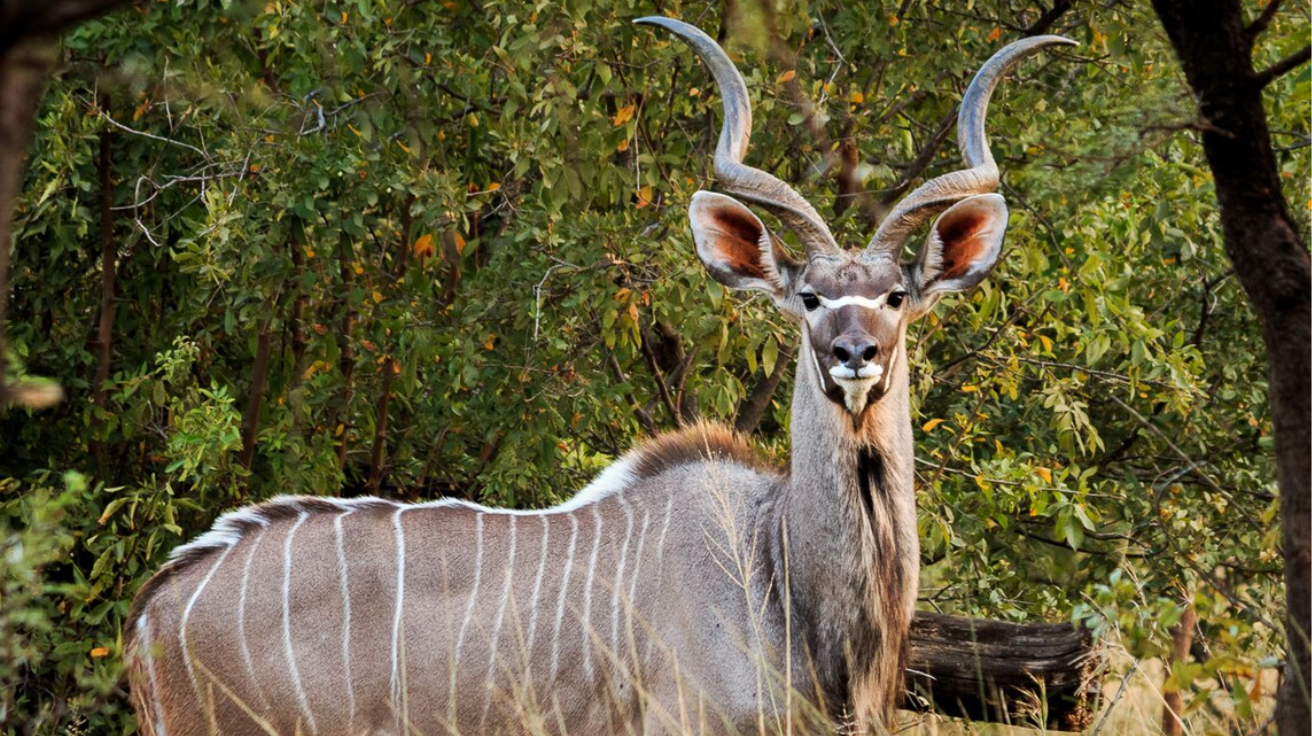
- Scientific Name:Tragelaphus strepsiceros
- Habitat & Range: Savannas, woodlands; found in Eastern & Southern Africa
- Unique Horn Structure & Function: Long, spiraled horns; used for defense & dominance
- Conservation Status: Least Concern
2. African Buffalo
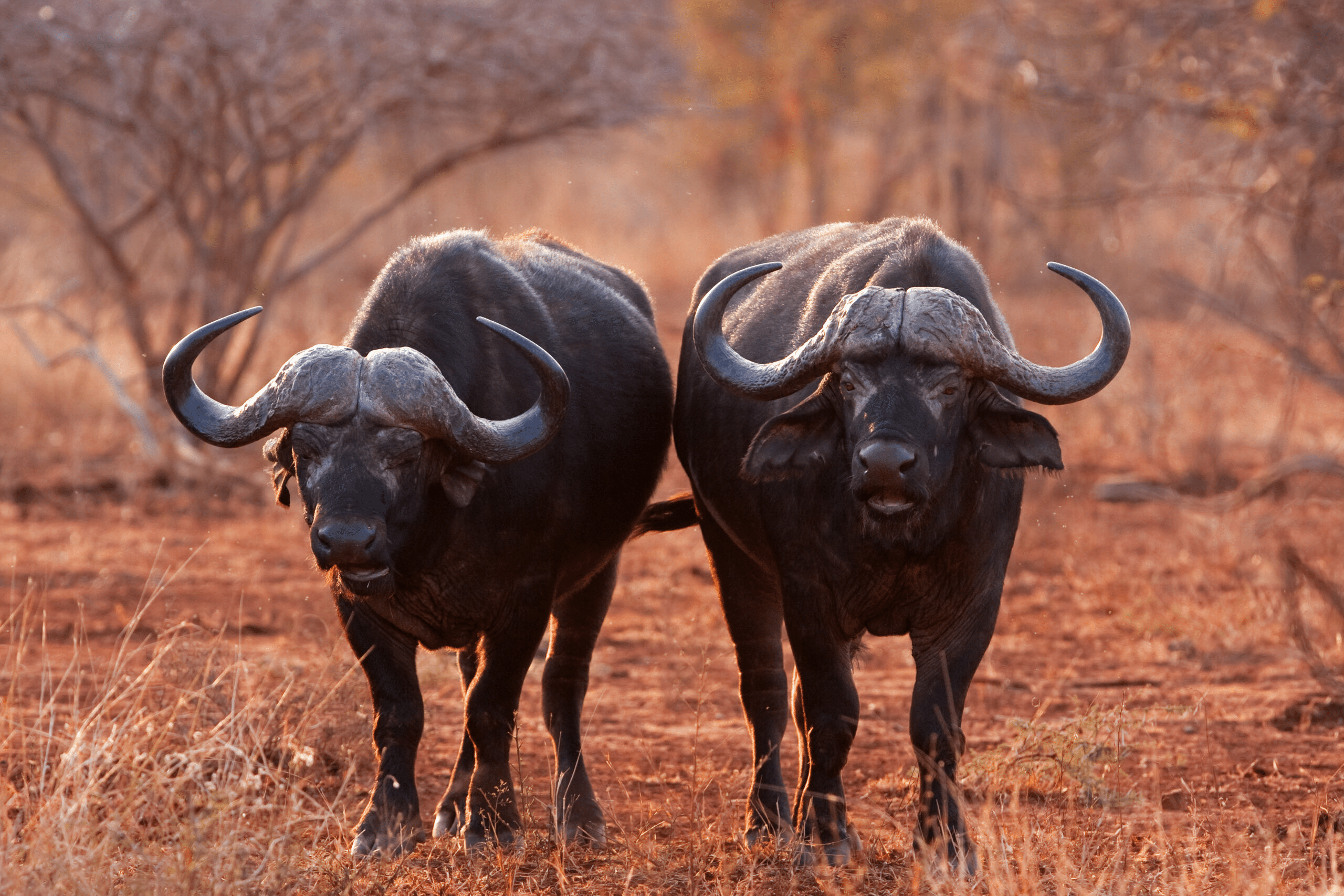
- Scientific Name:Syncerus caffer
- Habitat & Range: Grasslands, forests; widespread in Sub-Saharan Africa
- Unique Horn Structure & Function: Heavy, curved horns; used for protection & dominance
- Conservation Status: Near Threatened
3. Sable Antelope
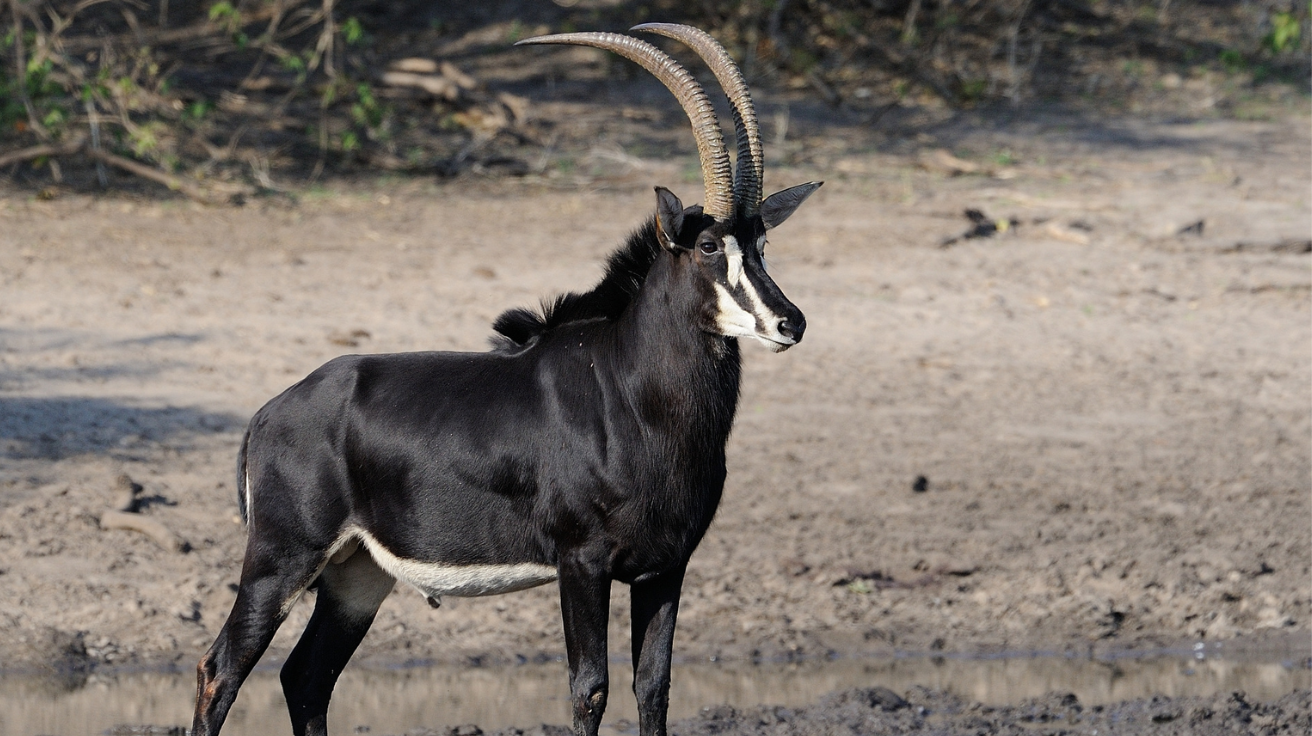
- Scientific Name:Hippotragus niger
- Habitat & Range: Savannahs, woodlands; Central & Southern Africa
- Unique Horn Structure & Function: Long, backward-arching horns; defense against predators
- Conservation Status: Least Concern
4. Impala
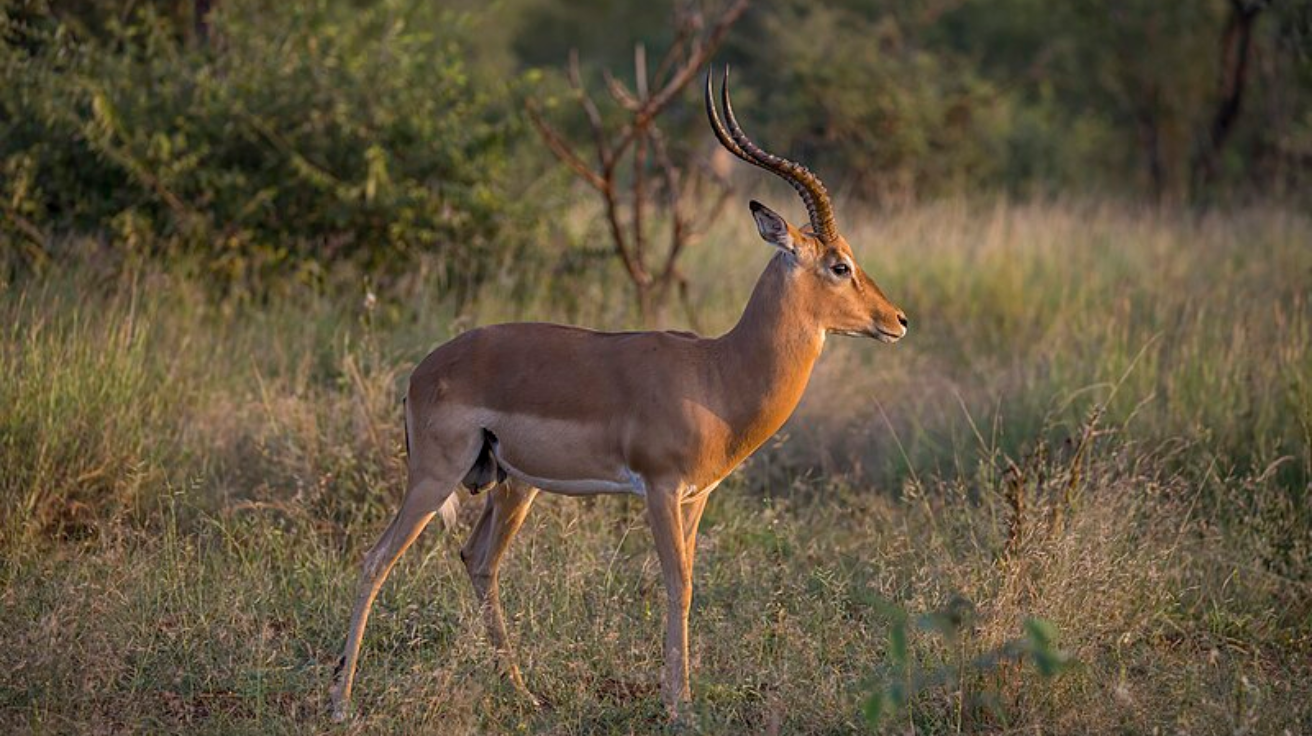
- Scientific Name:Aepyceros melampus
- Habitat & Range: Grasslands, woodlands; Eastern & Southern Africa
- Unique Horn Structure & Function: Lyre-shaped horns; used in male dominance fights
- Conservation Status: Least Concern
5. Bongo
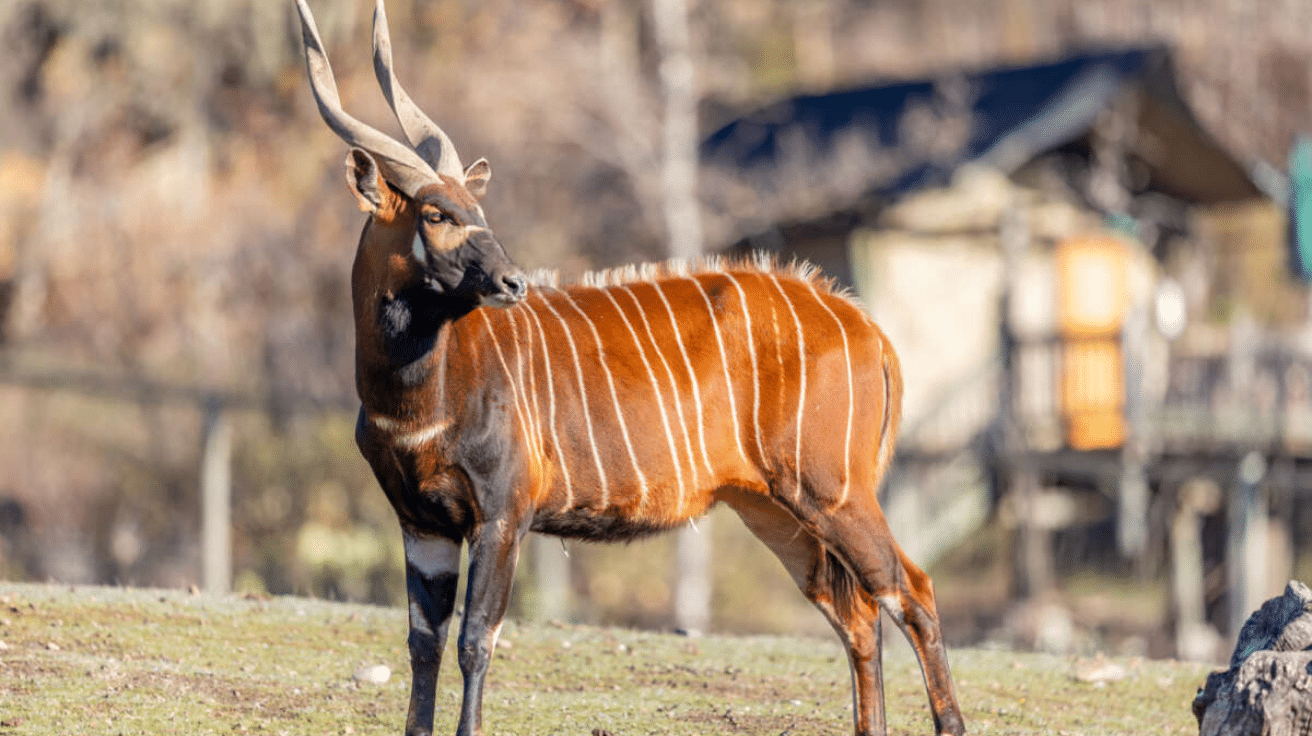
- Scientific Name:Tragelaphus eurycerus
- Habitat & Range: Dense rainforests; Central & West Africa
- Unique Horn Structure & Function: Spiral horns help in navigating thick vegetation
- Conservation Status: Near Threatened
6. Waterbuck
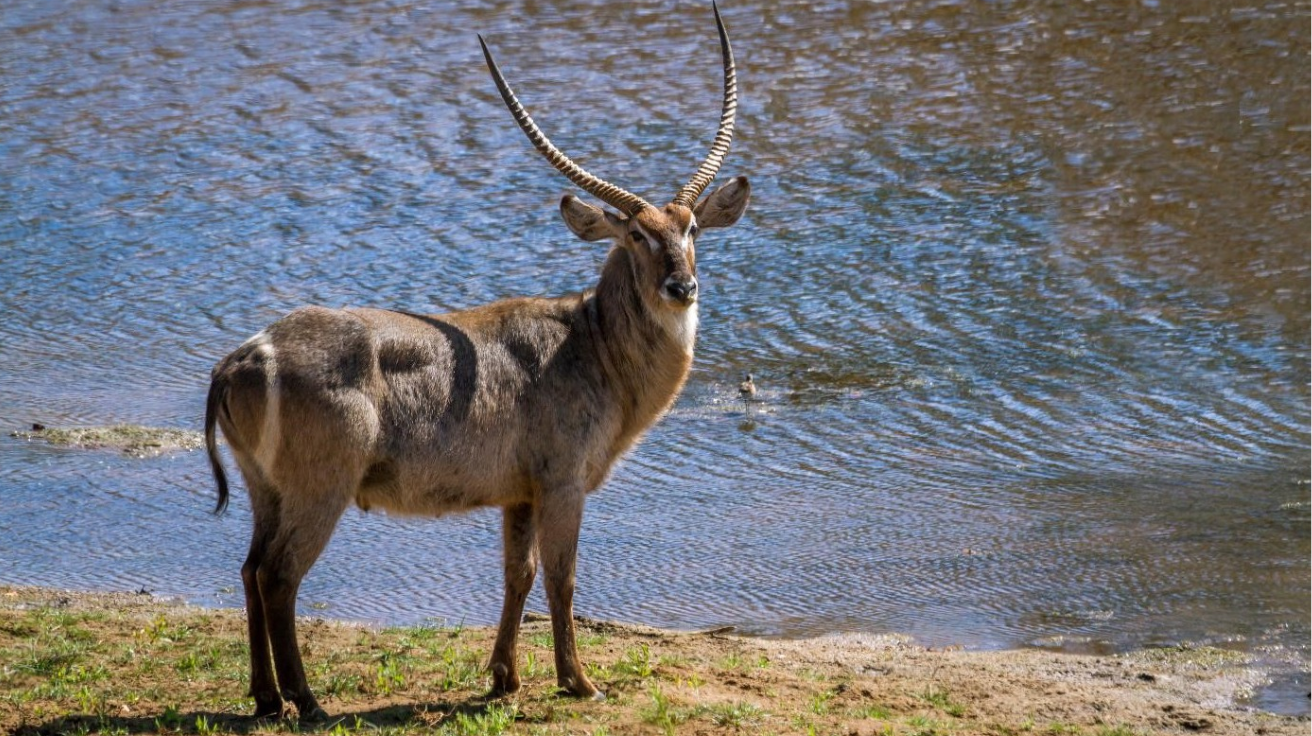
- Scientific Name:Kobus ellipsiprymnus
- Habitat & Range: Near water bodies; Sub-Saharan Africa
- Unique Horn Structure & Function: Long, ridged horns; used in male combat
- Conservation Status: Least Concern
7. Gemsbok (Oryx)
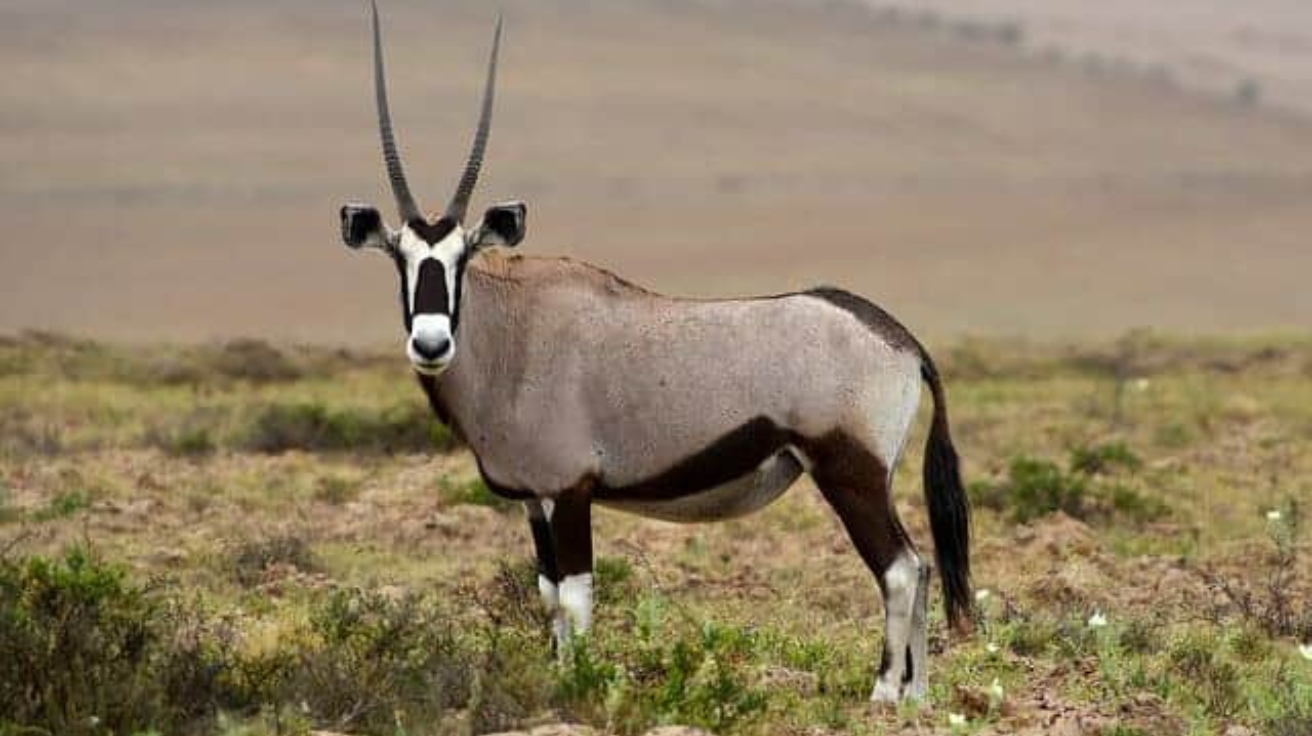
- Scientific Name:Oryx gazella
- Habitat & Range: Arid regions, deserts; Southern Africa
- Unique Horn Structure & Function: Long, straight horns; defense against predators
- Conservation Status: Least Concern
8. Eland
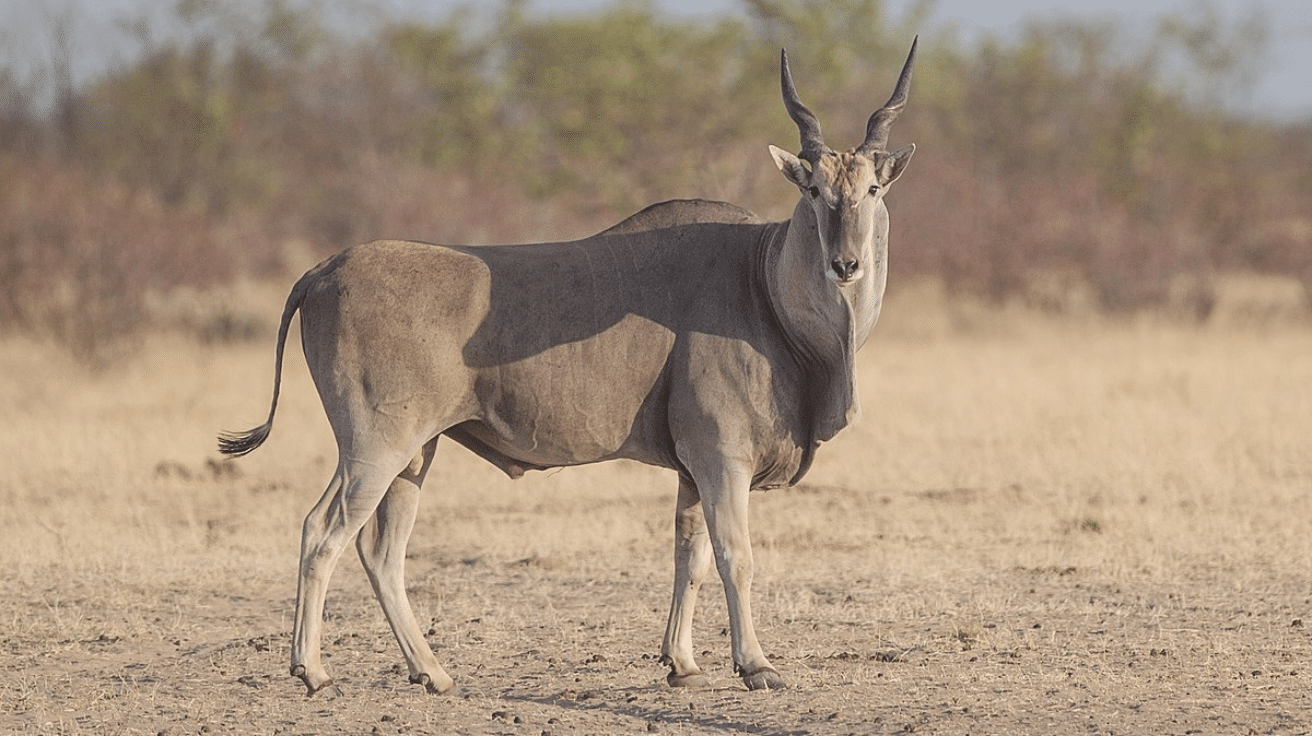
- Scientific Name:Taurotragus oryx
- Habitat & Range: Grasslands, woodlands; widespread in Africa
- Unique Horn Structure & Function: Twisted horns; used for defense & dominance
- Conservation Status: Least Concern
9. Bushbuck
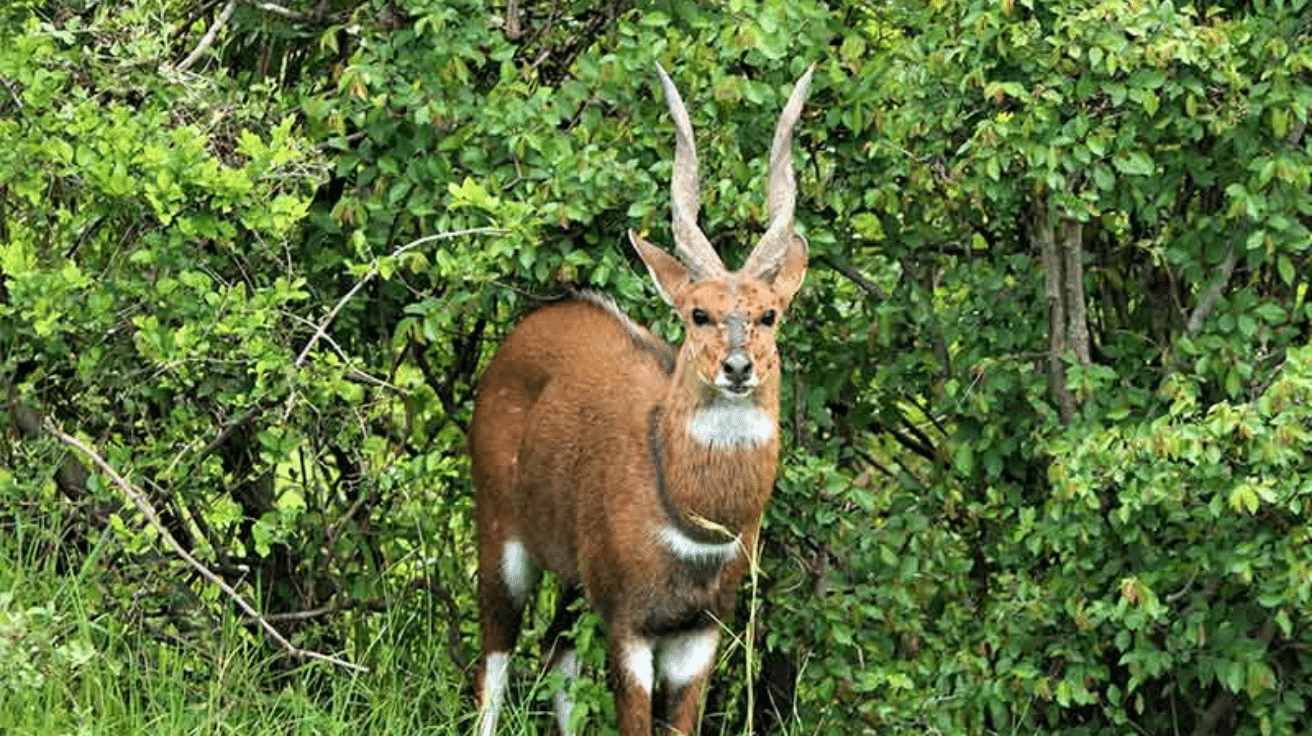
- Scientific Name:Tragelaphus scriptus
- Habitat & Range: Forests, savannas; widespread in Africa
- Unique Horn Structure & Function: Short, twisted horns; defense against predators
- Conservation Status: Least Concern
10. Nyala
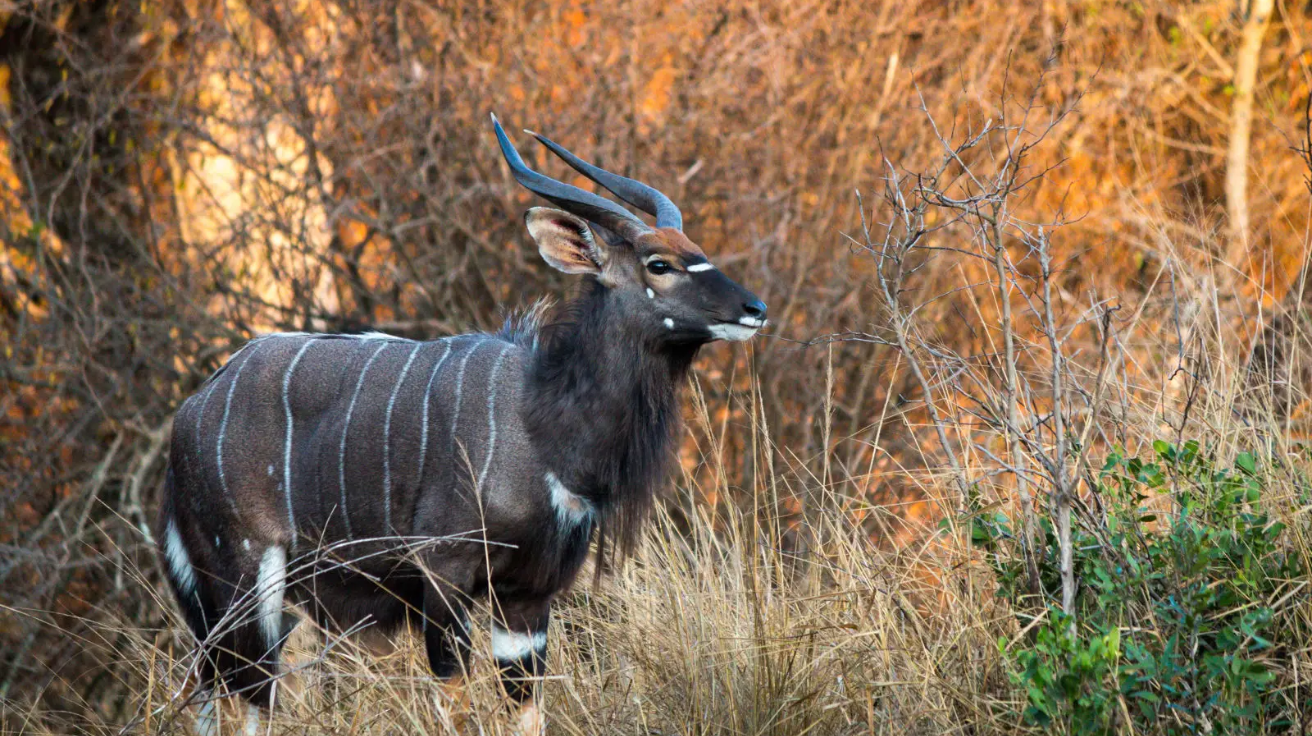
- Scientific Name:Tragelaphus angasii
- Habitat & Range: Woodlands, bushlands; Southern Africa
- Unique Horn Structure & Function: Spiral horns; are used for displays & fights
- Conservation Status: Least Concern
11. Hartebeest
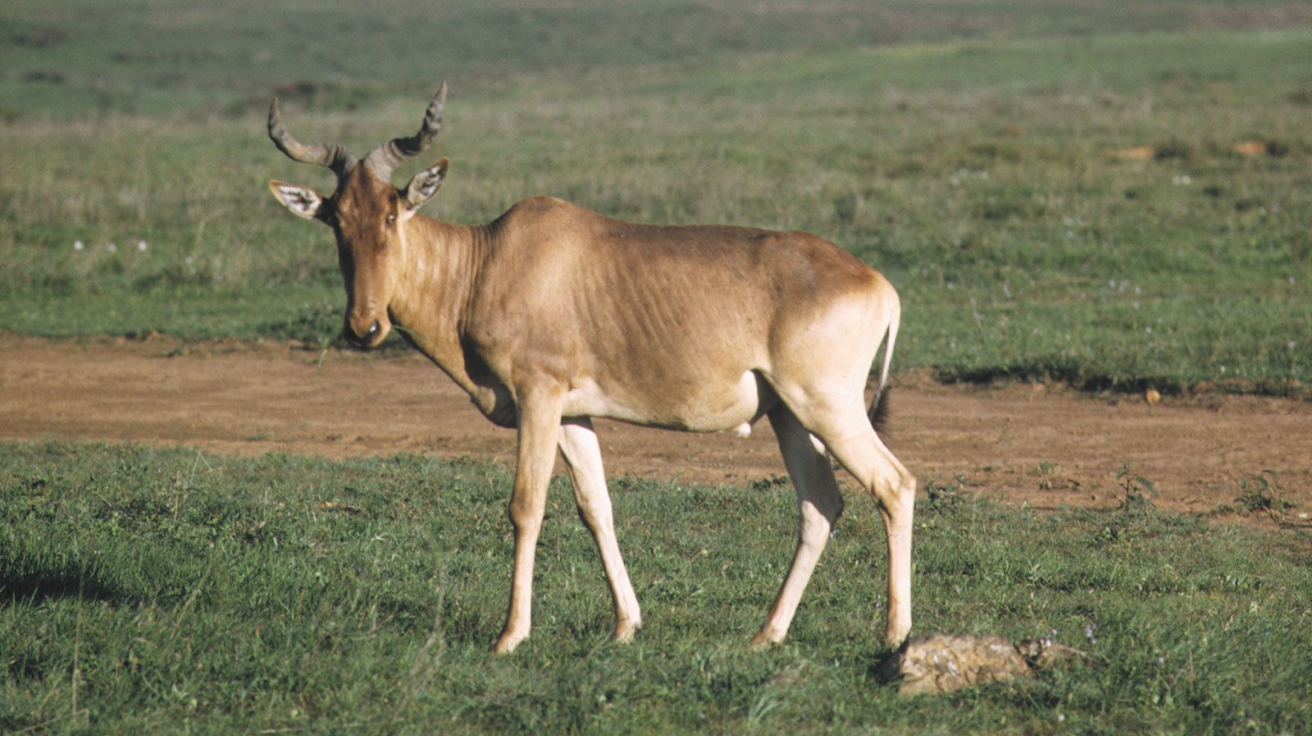
- Scientific Name:Alcelaphus buselaphus
- Habitat & Range: Grasslands, savannas; Sub-Saharan Africa
- Unique Horn Structure & Function: Lyre-shaped, ridged horns; defense & dominance
- Conservation Status: Least Concern
12. Topi
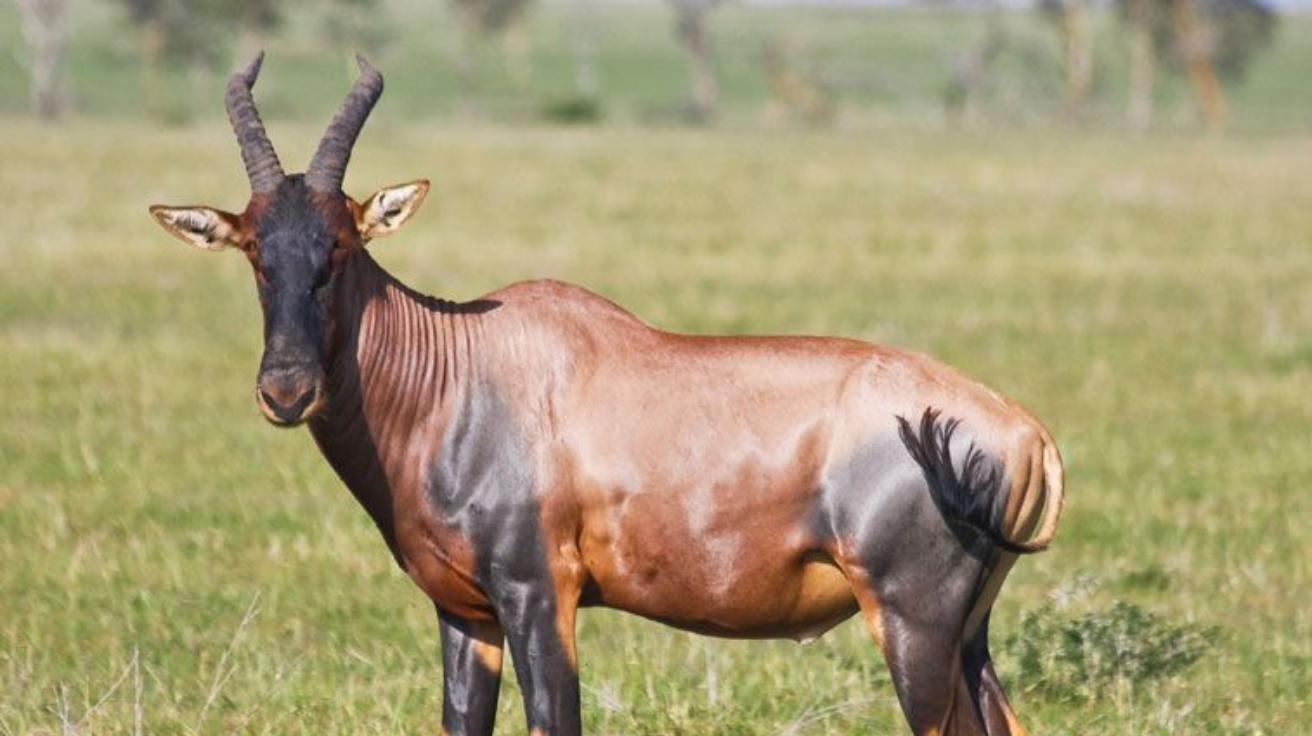
- Scientific Name:Damaliscus lunatus
- Habitat & Range: Savannas, floodplains; Eastern & Central Africa
- Unique Horn Structure & Function: Thick, ringed horns; used in territorial fights
- Conservation Status: Least Concern
13. Bontebok
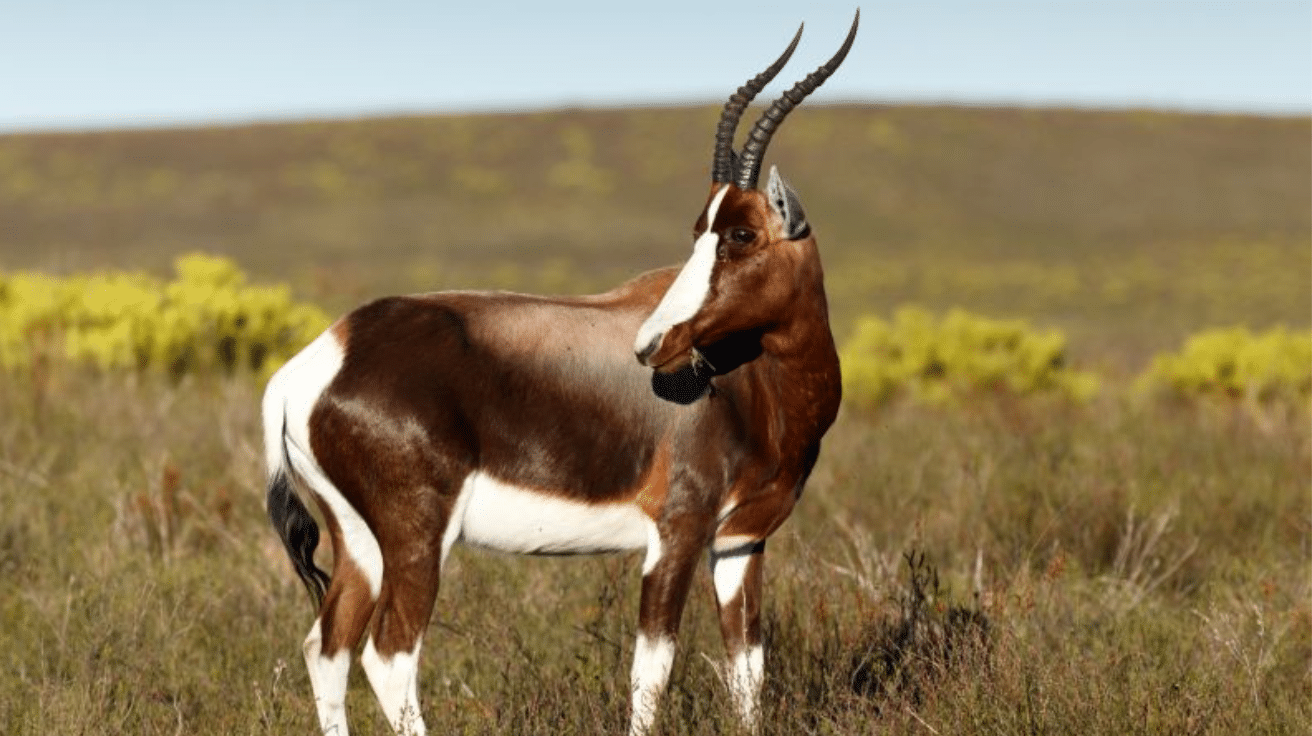
- Scientific Name:Damaliscus pygargus
- Habitat & Range: Grasslands; South Africa
- Unique Horn Structure & Function: Curved, ridged horns; defense & mating dominance
- Conservation Status: Near Threatened
14. Wildebeest
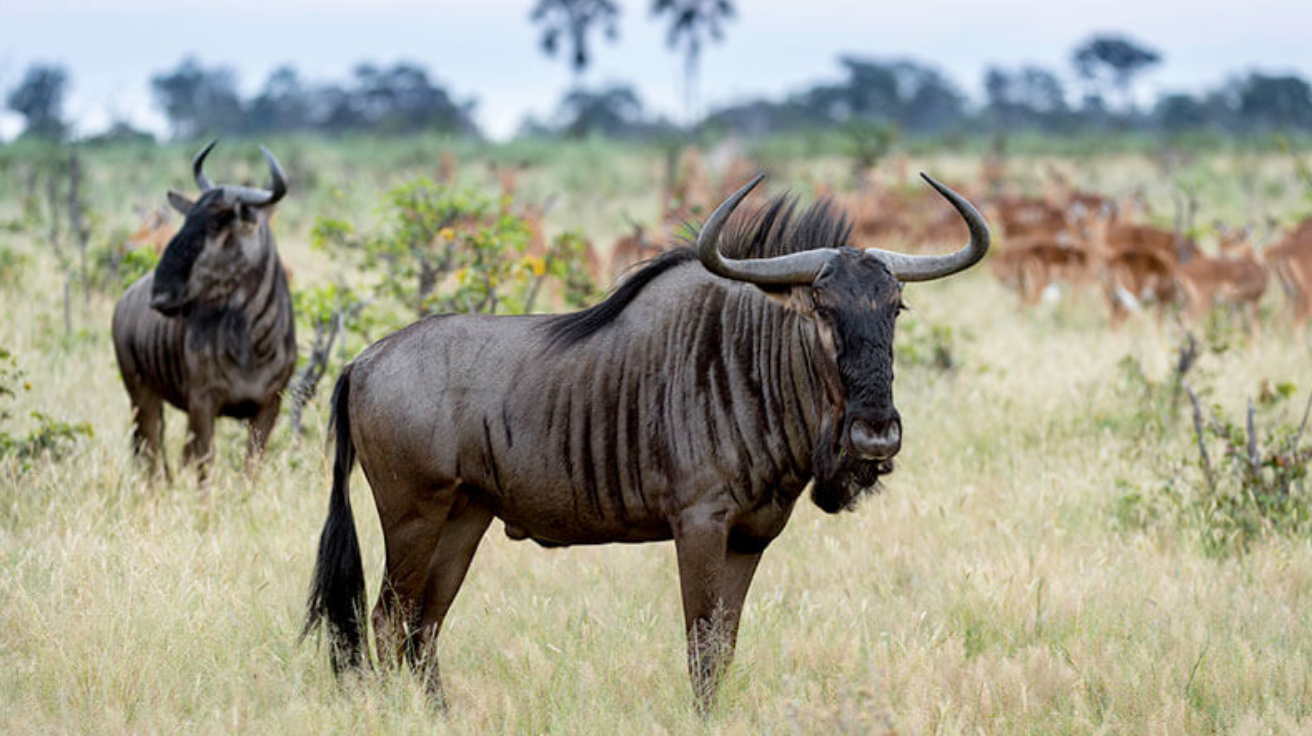
- Scientific Name:Connochaetes taurinus
- Habitat & Range: Grasslands, open plains; East & Southern Africa
- Unique Horn Structure & Function: Thick, curved horns; defense & social ranking
- Conservation Status: Least Concern
15. Springbok
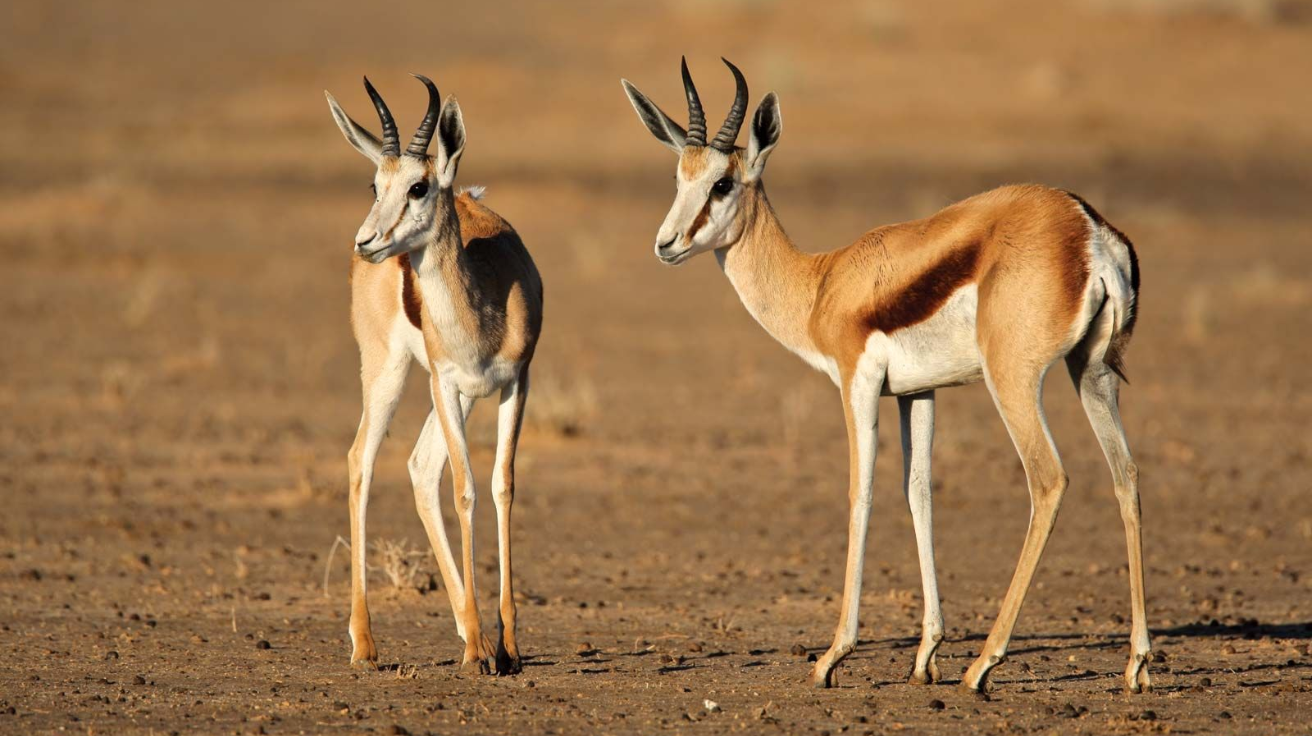
- Scientific Name:Antidorcas marsupialis
- Habitat & Range: Dry plains, savannas; Southern Africa
- Unique Horn Structure & Function: Lyre-shaped horns; used in male competition
- Conservation Status: Least Concern
16. Addax
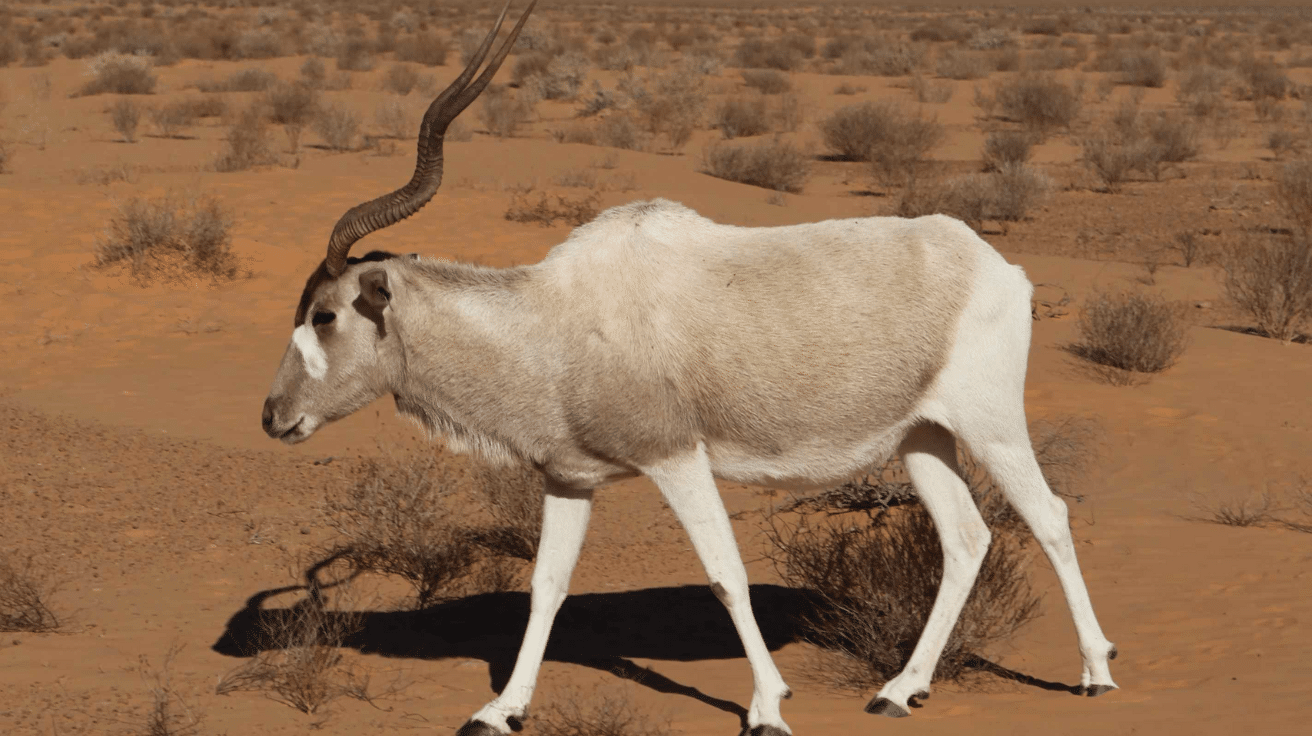
- Scientific Name:Addax nasomaculatus
- Habitat & Range: Sahara Desert; North Africa
- Unique Horn Structure & Function: Long, twisted horns; defense & temperature regulation
- Conservation Status: Critically Endangered
17. Roan Antelope
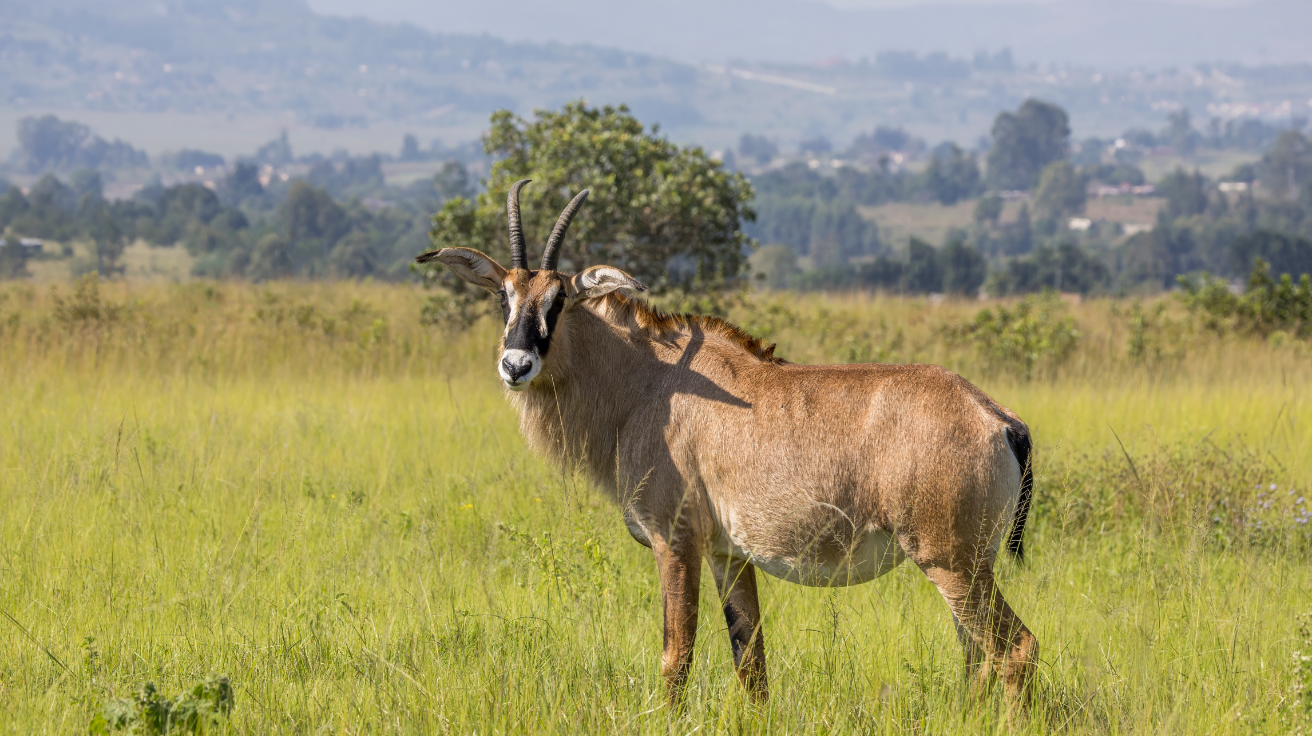
- Scientific Name:Hippotragus equinus
- Habitat & Range: Grasslands, savannas; Central & West Africa
- Unique Horn Structure & Function: Curved, ridged horns; used in dominant battles
- Conservation Status: Near Threatened
18. Duiker
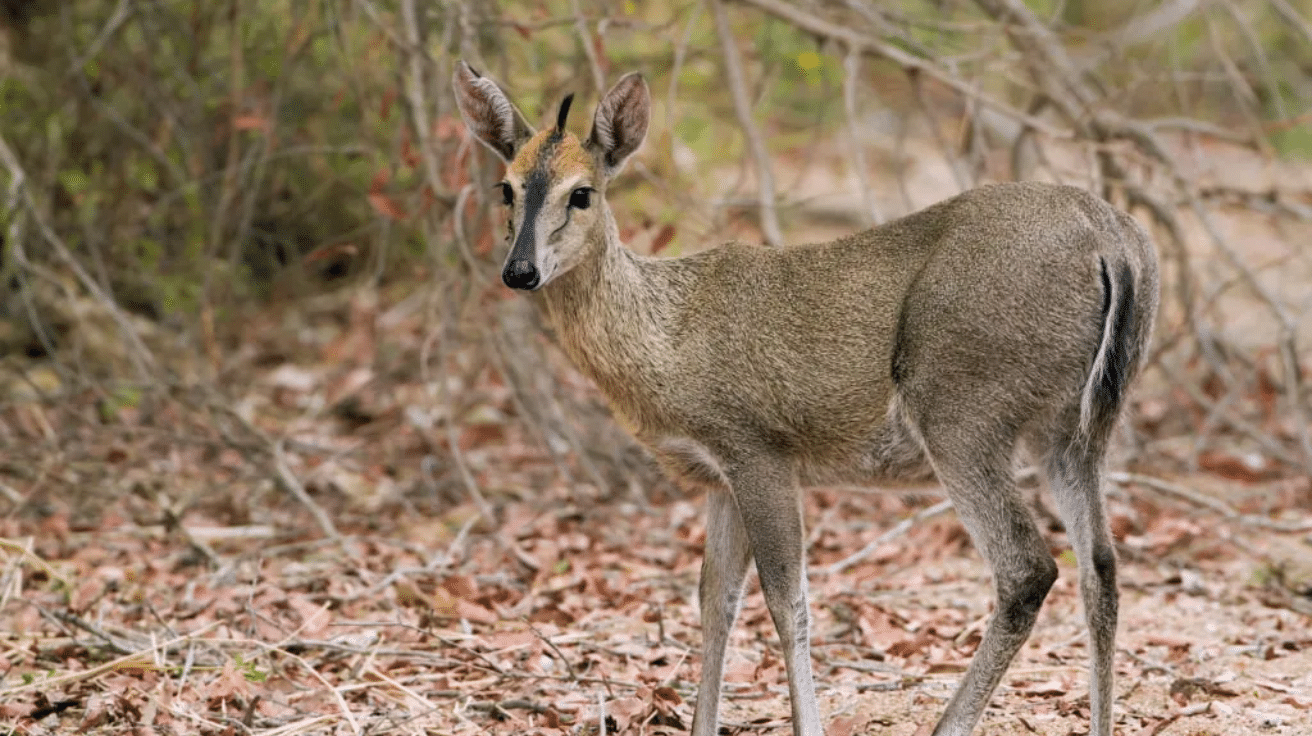
- Scientific Name:Cephalophinae spp.
- Habitat & Range: Forests, woodlands; widespread in Africa
- Unique Horn Structure & Function: Short, straight horns; are used for protection
- Conservation Status: Varies by species
19. Klipspringer
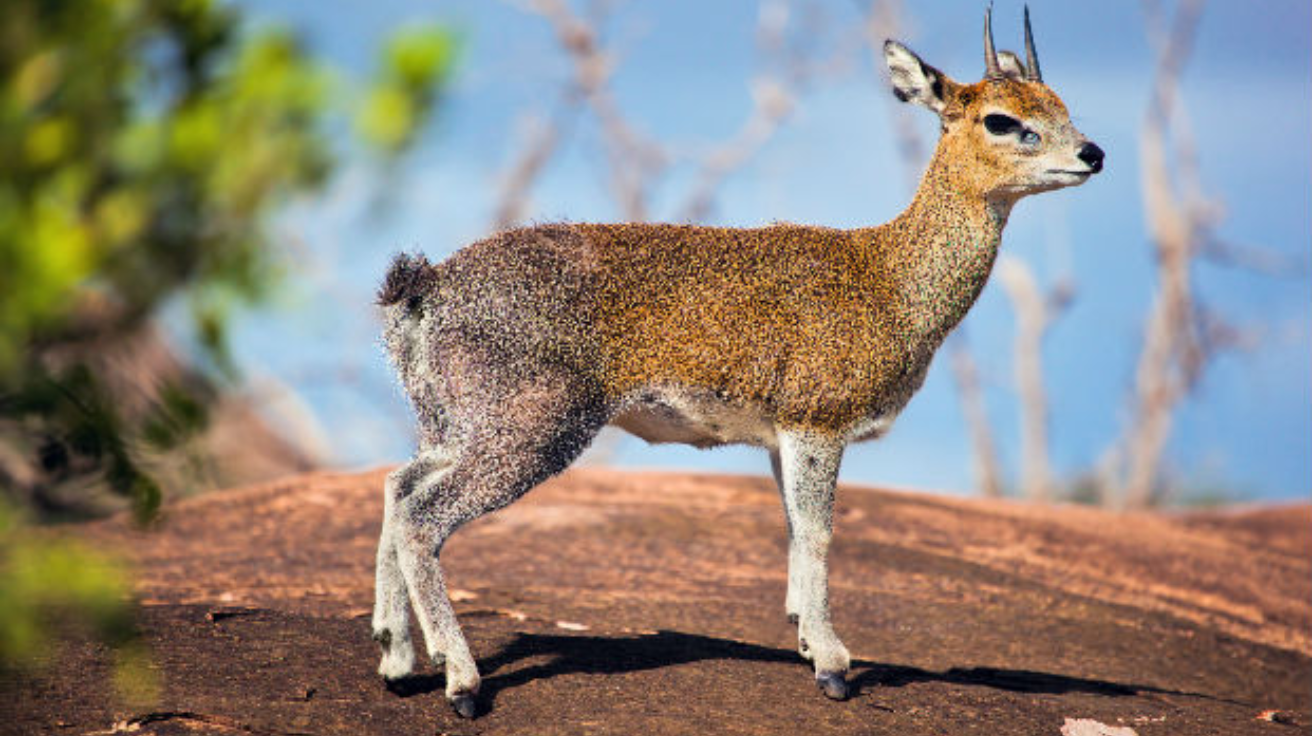
- Scientific Name:Oreotragus oreotragus
- Habitat & Range: Rocky outcrops, mountains; Sub-Saharan Africa
- Unique Horn Structure & Function: Small, straight horns; territorial defense
- Conservation Status: Least Concern
20. Steenbok
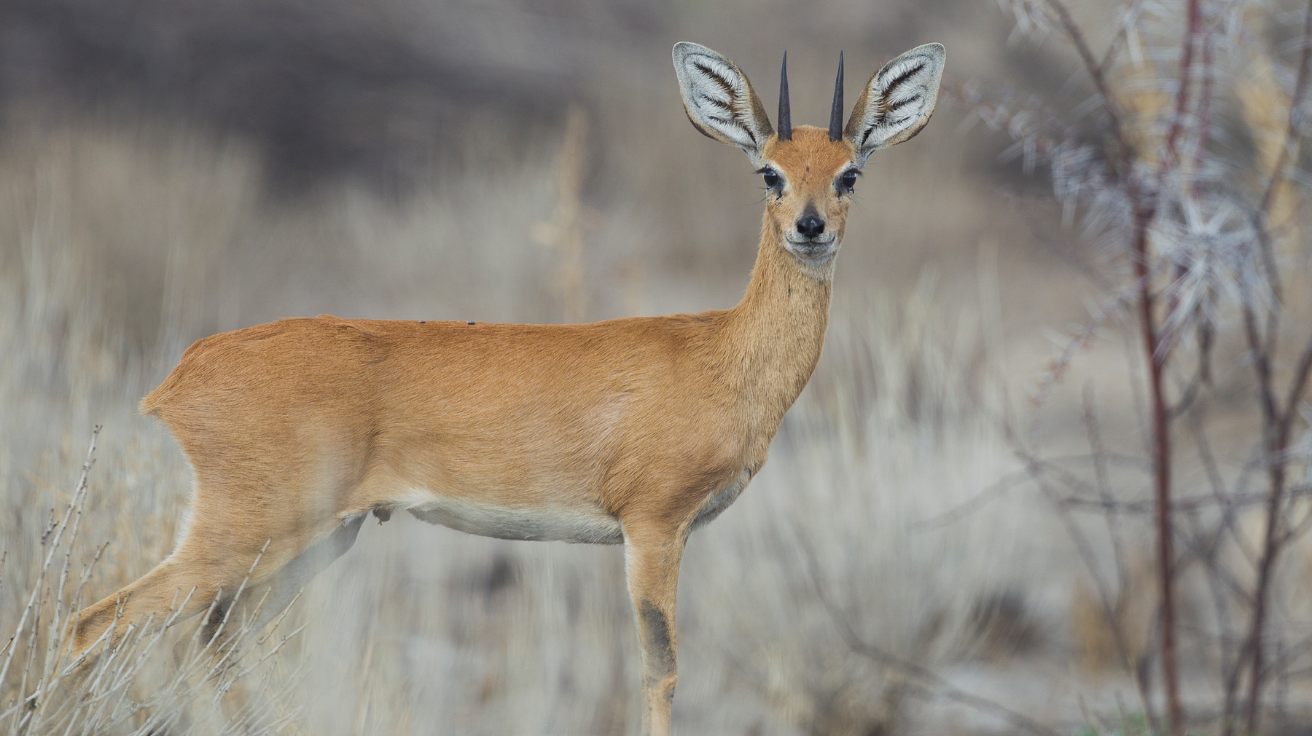
- Scientific Name:Raphicerus campestris
- Habitat & Range: Open plains, woodlands; Southern & East Africa
- Unique Horn Structure & Function: Short, pointed horns; defense & camouflage
- Conservation Status: Least Concern
21. Dik-Dik
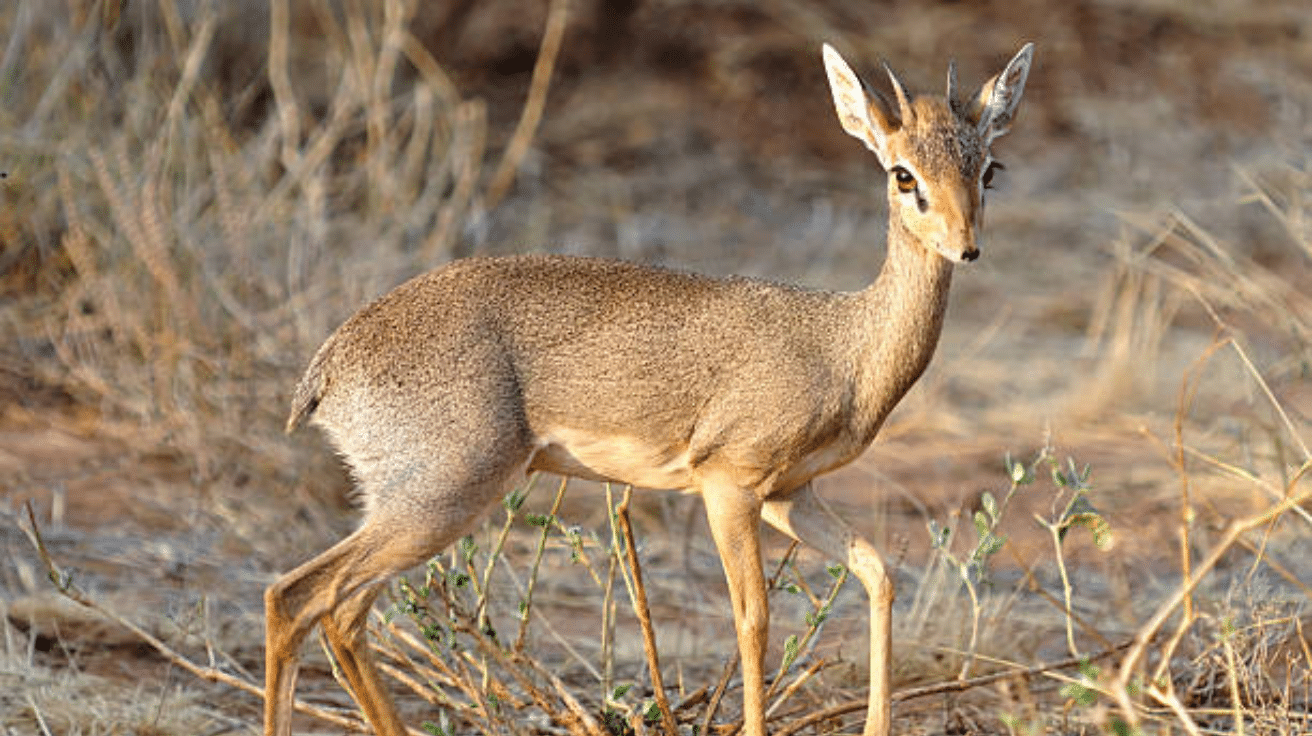
- Scientific Name:Madoqua spp.
- Habitat & Range: Grasslands, savannas; Eastern & Southern Africa
- Unique Horn Structure & Function: Tiny, backward-curving horns; predator evasion
- Conservation Status: Least Concern
22. Oribi
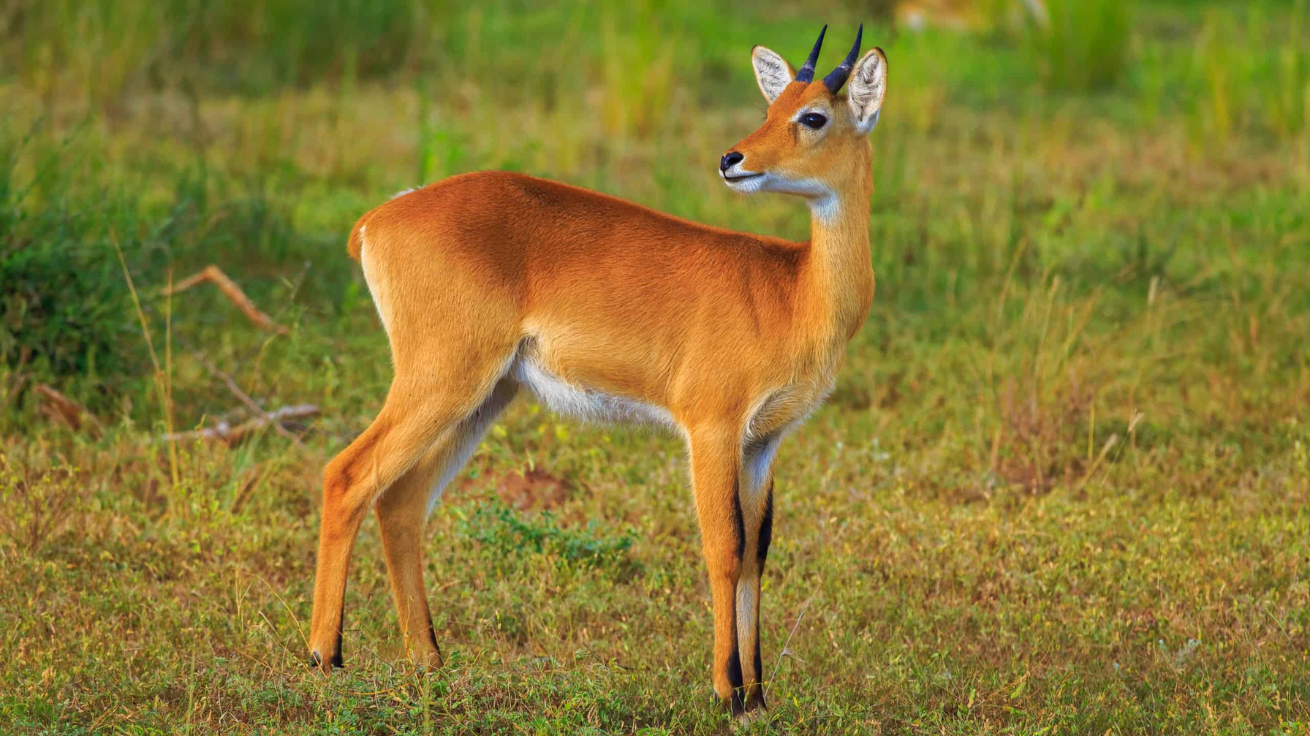
- Scientific Name:Ourebia ourebi
- Habitat & Range: Grasslands, floodplains; Sub-Saharan Africa
- Unique Horn Structure & Function: Small, straight horns; defense against predators
- Conservation Status: Least Concern
23. Tsessebe
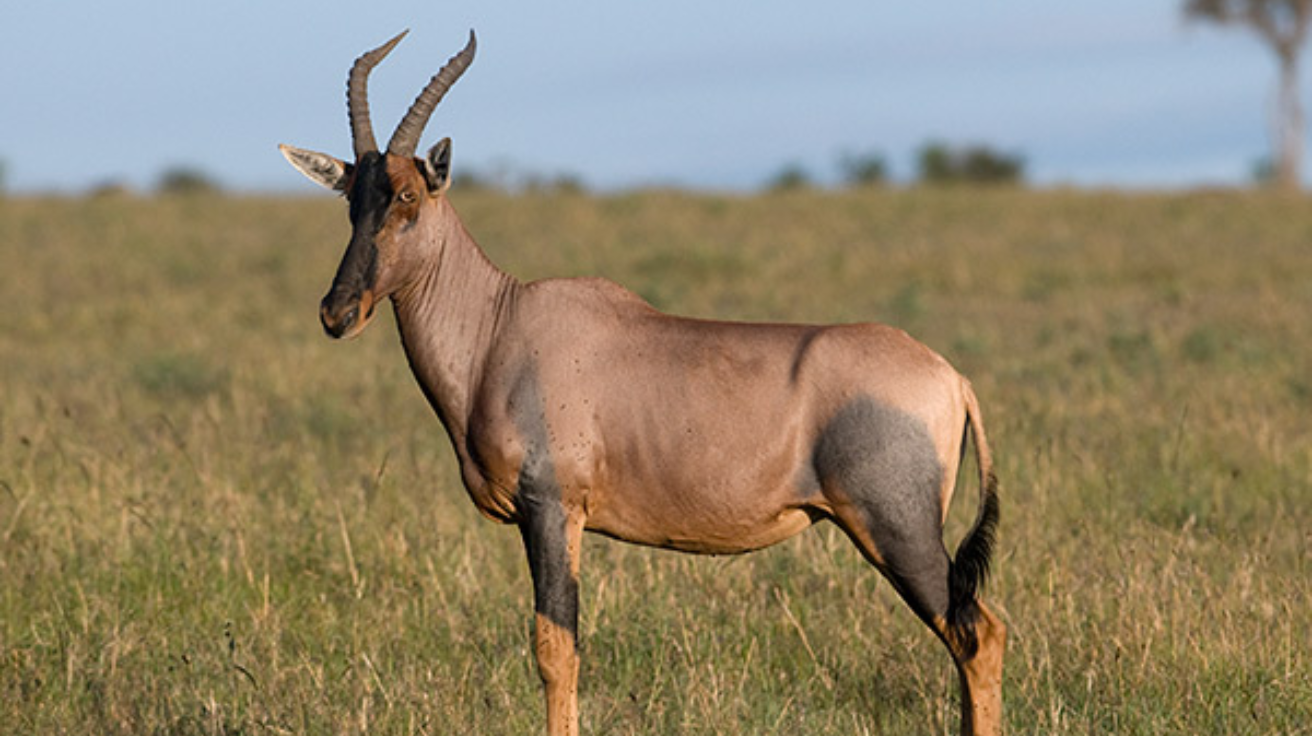
- Scientific Name:Damaliscus lunatus lunatus
- Habitat & Range: Open plains, grasslands; Southern & East Africa
- Unique Horn Structure & Function: Thick, curved horns; used in combat
- Conservation Status: Least Concern
24. Reedbuck
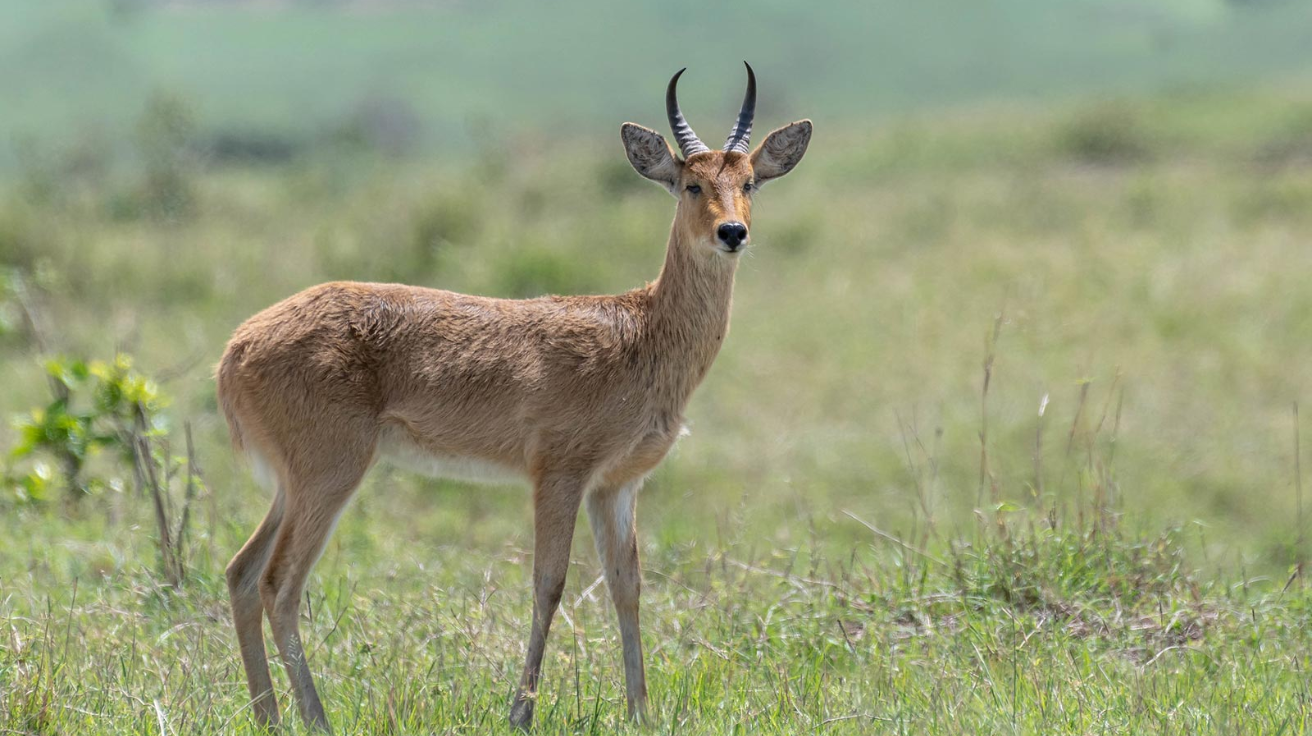
- Scientific Name:Redunca spp.
- Habitat & Range: Wetlands, grasslands; Sub-Saharan Africa
- Unique Horn Structure & Function: Curved, ridged horns; defense & dominance
- Conservation Status: Least Concern
25. Mountain Nyala
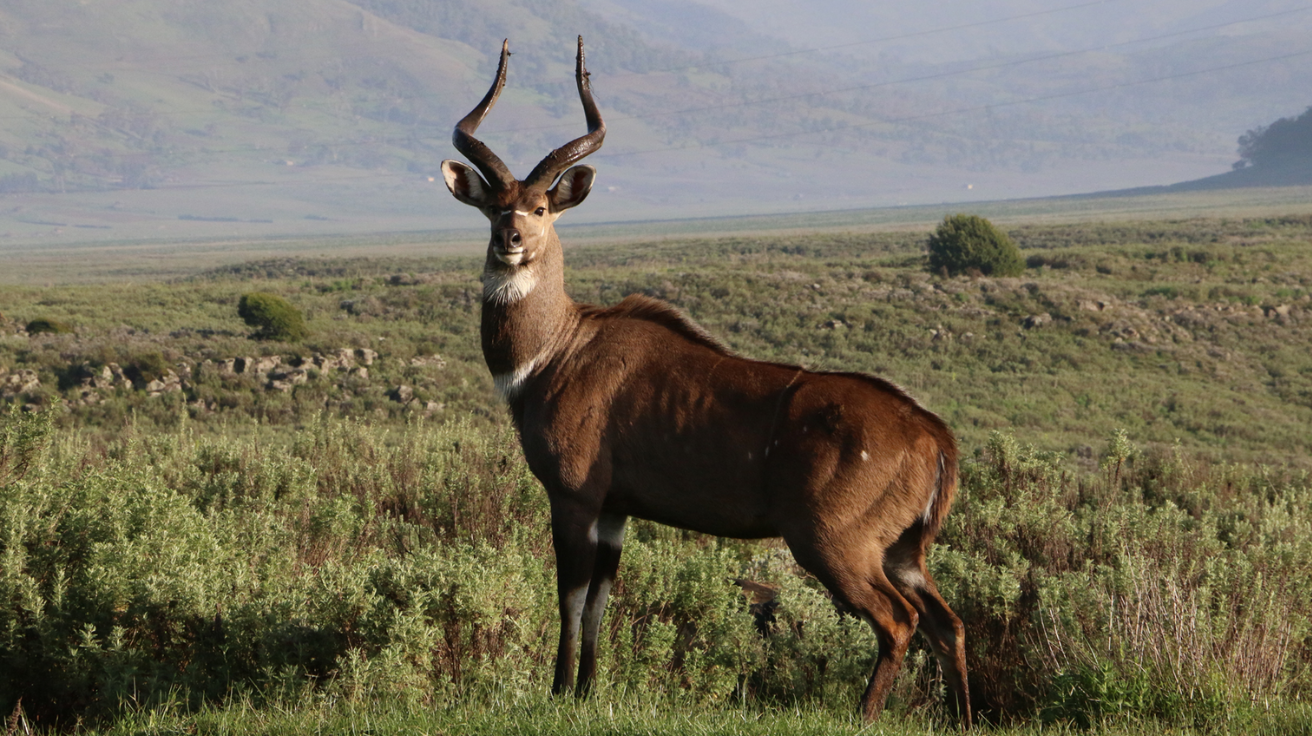
- Scientific Name:Tragelaphus buxtoni
- Habitat & Range: Ethiopian highlands
- Unique Horn Structure & Function: Spiraled horns used in male dominance fights
- Conservation Status: Endangered
26. Giant Eland
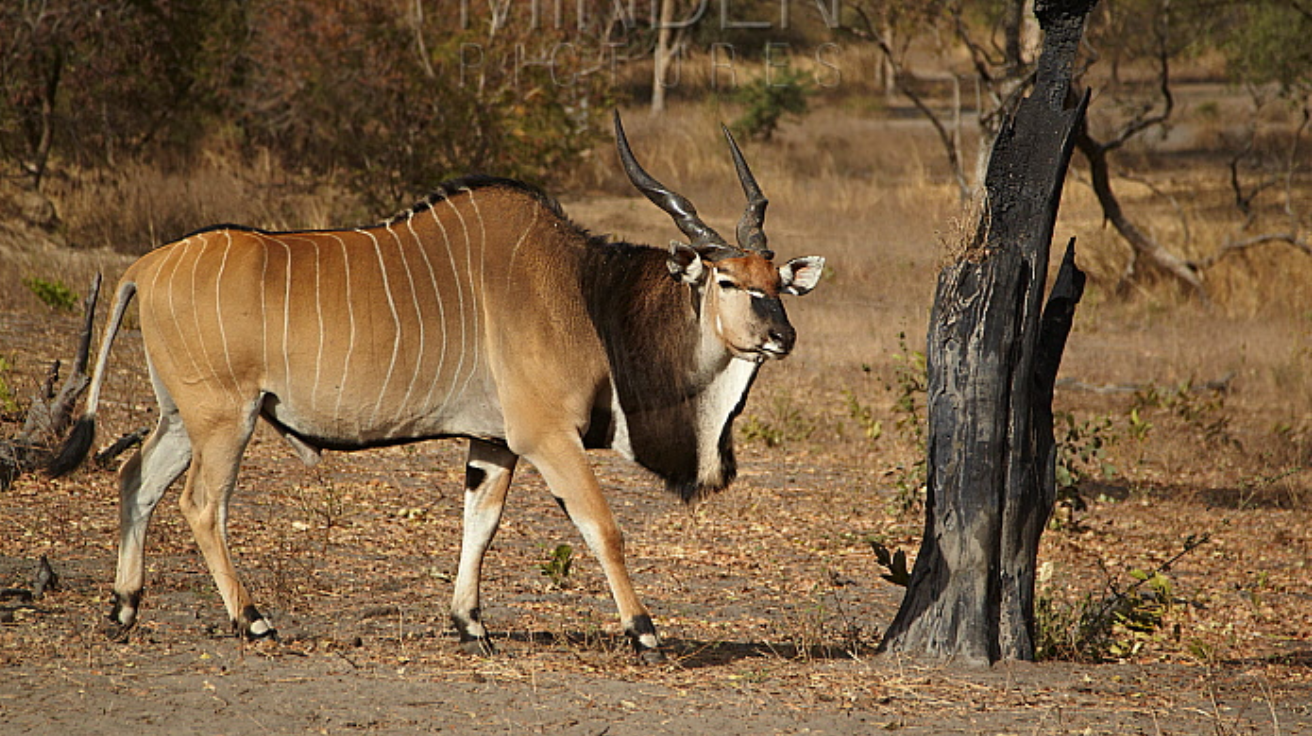
- Scientific Name:Taurotragus derbianus
- Habitat & Range: Woodlands, savannas; Central & West Africa
- Unique Horn Structure & Function: Twisted, thick horns; social ranking & defense
- Conservation Status: Vulnerable
27. Four-Horned Antelope
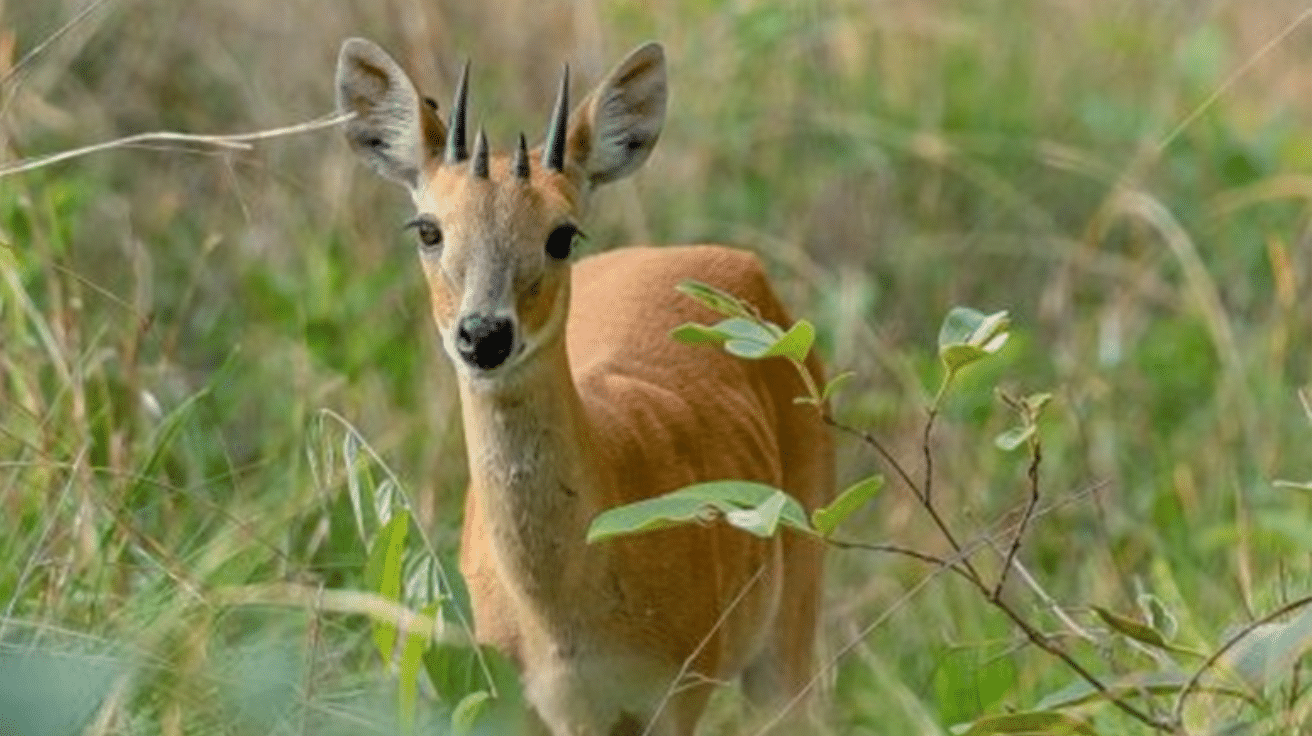
- Scientific Name:Tetracerus quadricornis
- Habitat & Range: Grasslands, forests; West & Central Africa
- Unique Horn Structure & Function: Two sets of horns; territorial defense
- Conservation Status: Vulnerable
28. Sitatunga
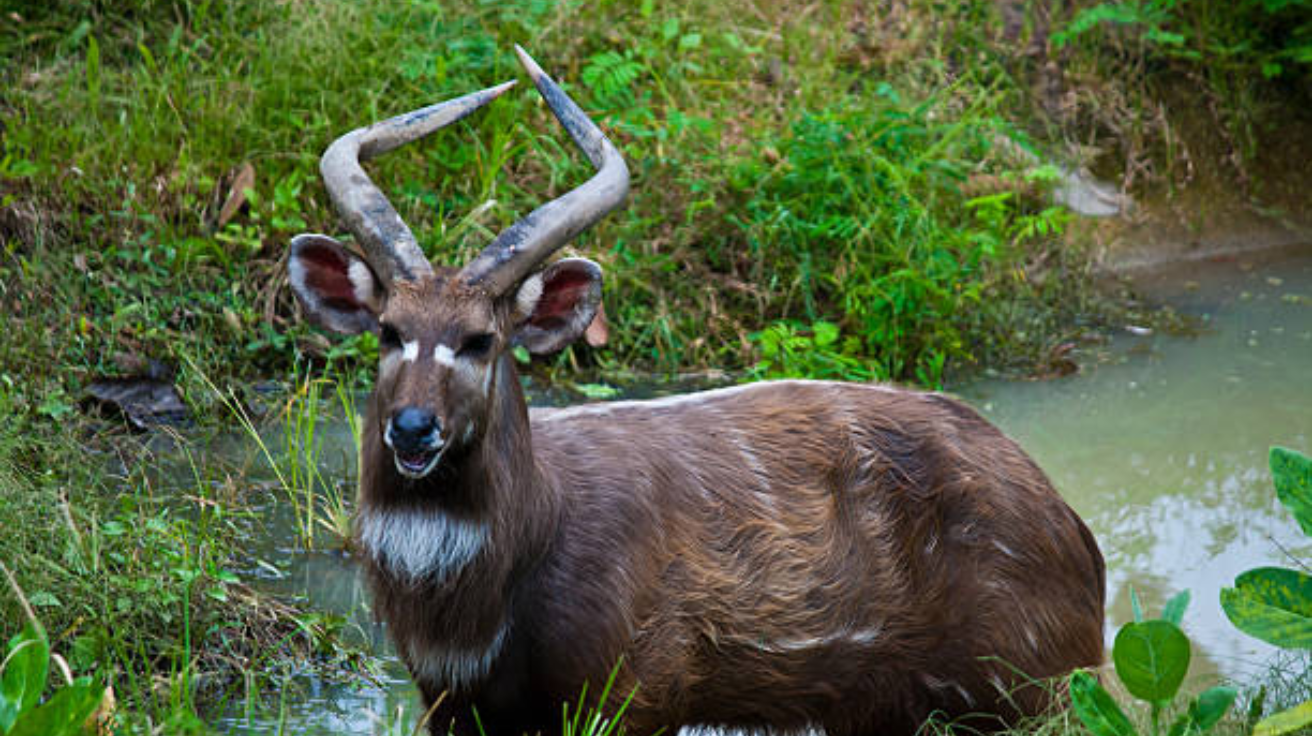
- Scientific Name:Tragelaphus spekii
- Habitat & Range: Swamps, wetlands; Central & West Africa
- Unique Horn Structure & Function: Spiral horns adapted for marshy terrain
- Conservation Status: Least Concern
29. Puku
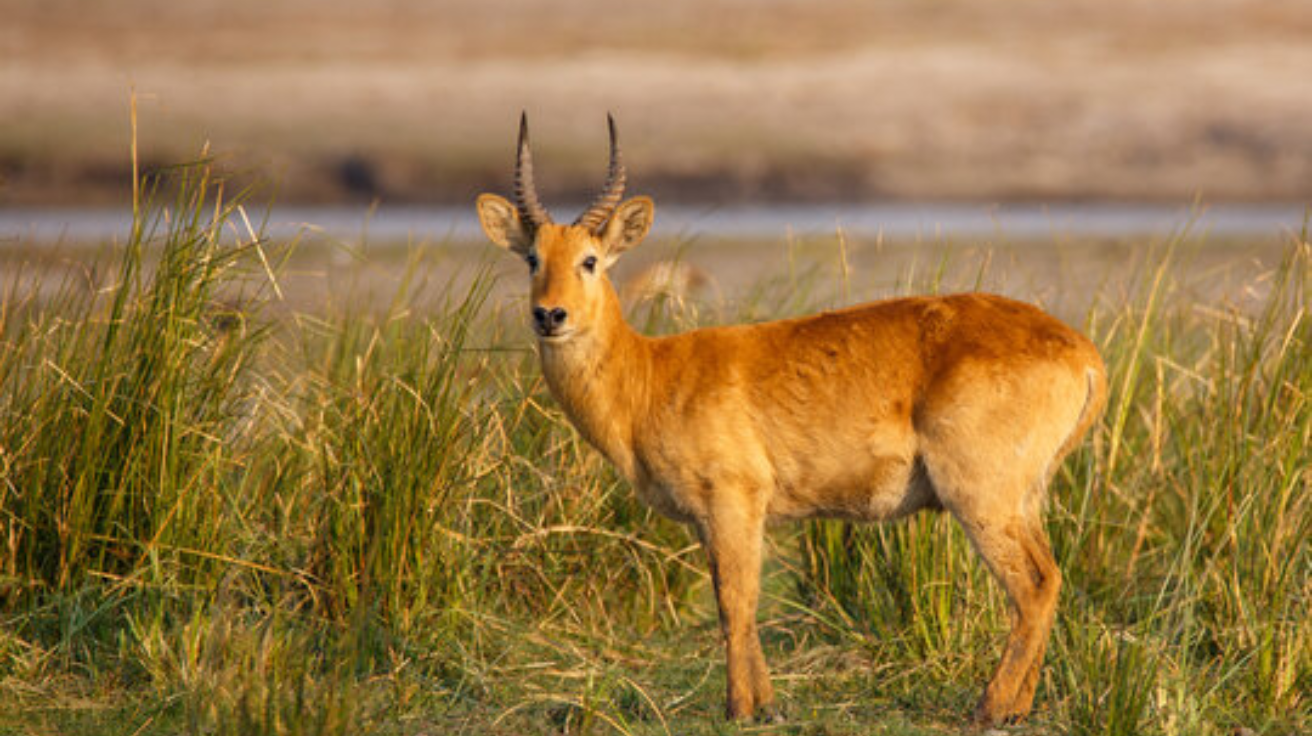
- Scientific Name:Kobus vardonii
- Habitat & Range: Wet grasslands; Central & Southern Africa
- Unique Horn Structure & Function: Lyre-shaped horns used for mating battles
- Conservation Status: Near Threatened
30. Lechwe
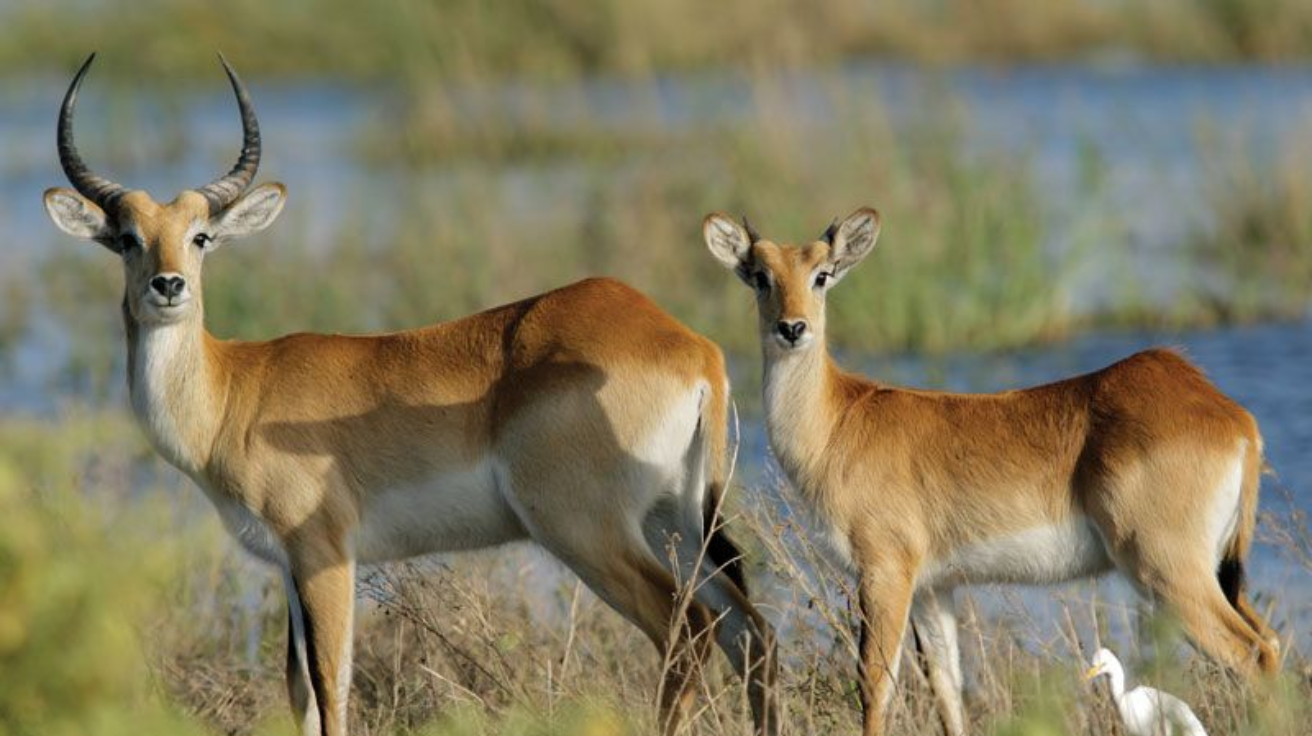
- Scientific Name:Kobus leche
- Habitat & Range: Floodplains, wetlands; Southern & Central Africa
- Unique Horn Structure & Function: Backward-arching horns; dominance in herds
- Conservation Status: Near Threatened
31. Greater Kudu
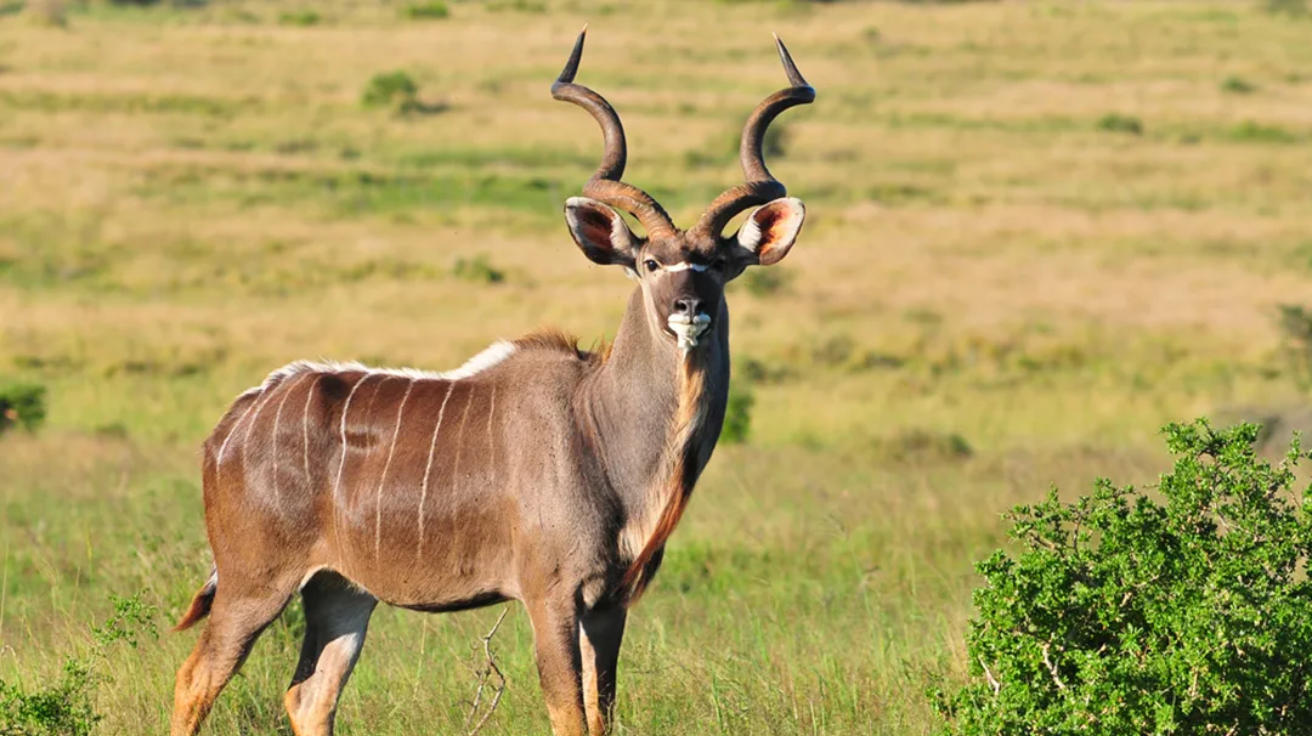
- Scientific Name:Tragelaphus strepsiceros
- Habitat & Range: Woodlands, savannas; East & Southern Africa
- Unique Horn Structure & Function: Long, spiraled horns; mating and dominance display
- Conservation Status: Least Concern
32. Lesser Kudu
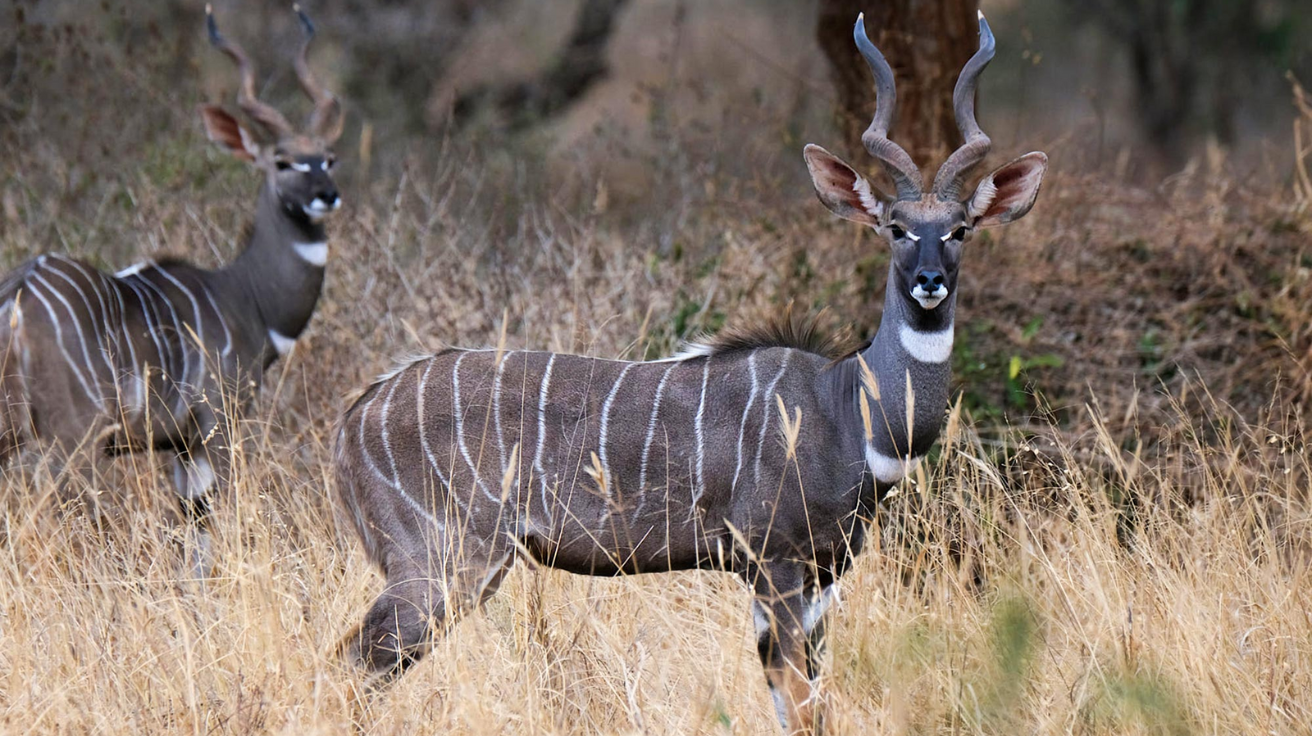
- Scientific Name:Tragelaphus imberbis
- Habitat & Range: Dry bushlands; East Africa
- Unique Horn Structure & Function: Majestic spiral horns; defense & male ranking
- Conservation Status: Near Threatened
33. Beisa Oryx
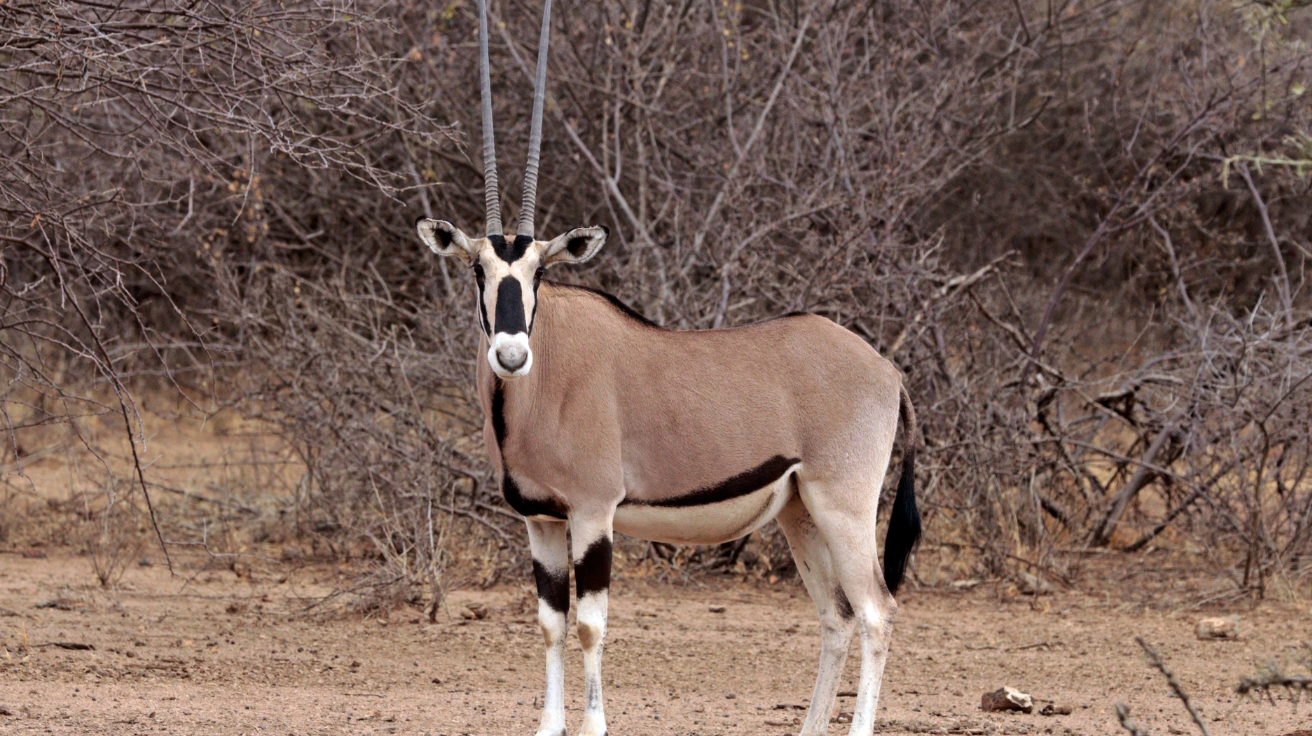
- Scientific Name:Oryx beisa
- Habitat & Range: Arid savannas; East Africa
- Unique Horn Structure & Function: Long, straight horns; defense against predators
- Conservation Status: Near Threatened
34. Scimitar-Horned Oryx
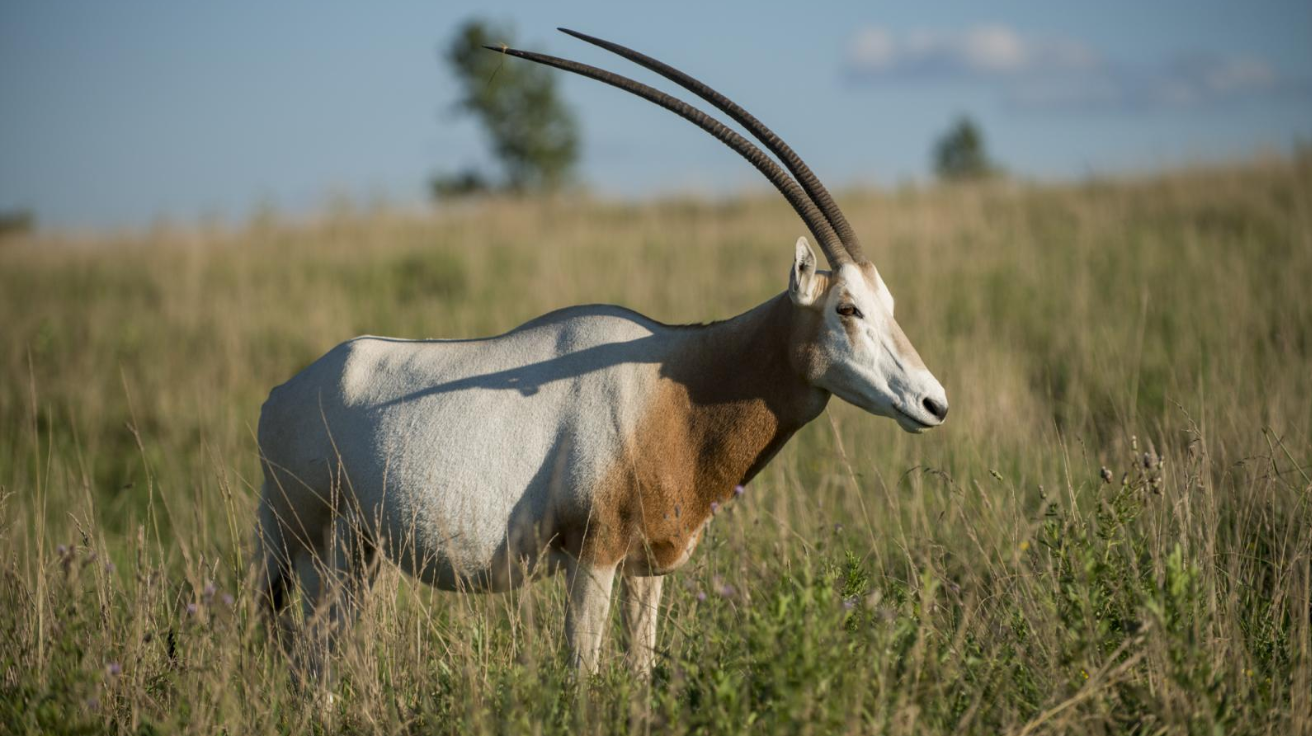
- Scientific Name:Oryx dammah
- Habitat & Range: Desert regions; North Africa (reintroduced populations)
- Unique Horn Structure & Function: Long, curved horns; predator deterrence
- Conservation Status: Extinct in the Wild
35. Black-Faced Impala
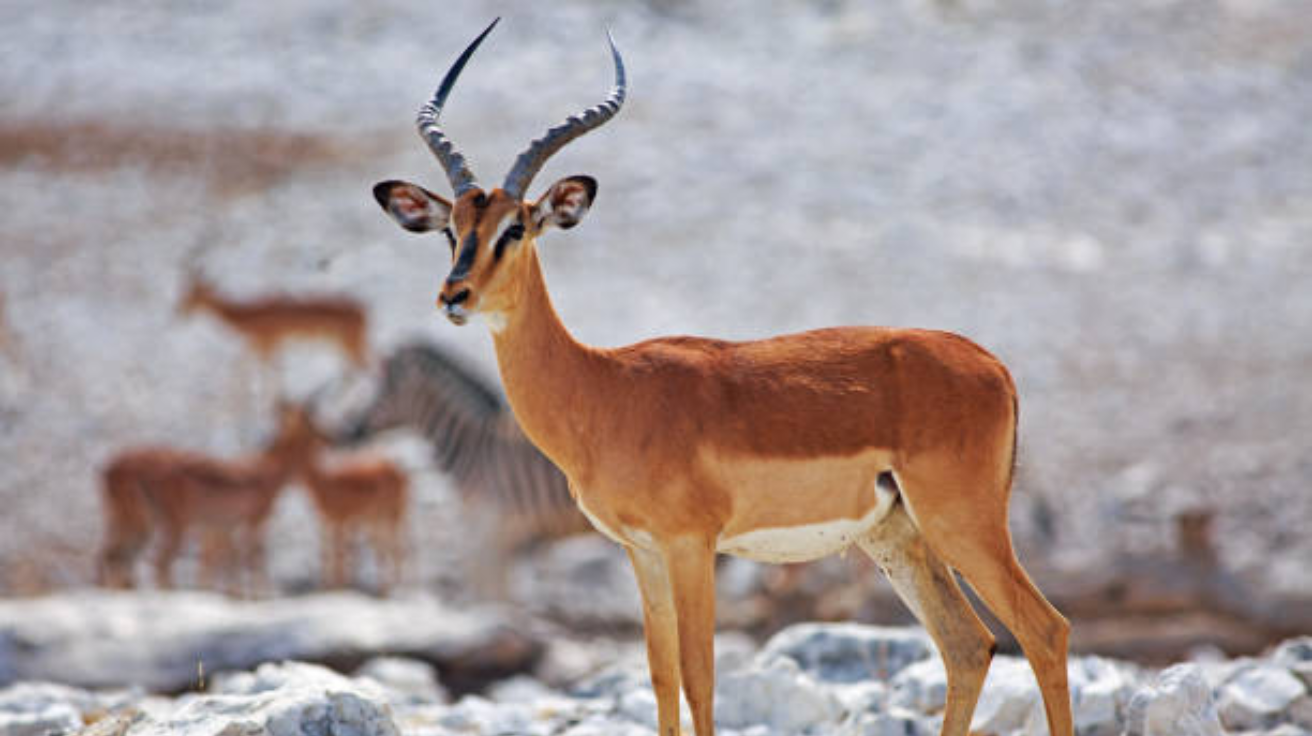
- Scientific Name:Aepyceros melampus petersi
- Habitat & Range: Open woodlands; Namibia, Angola
- Unique Horn Structure & Function: Lyre-shaped horns; dominant in fights
- Conservation Status: Vulnerable
36. Zambezi Sitatunga
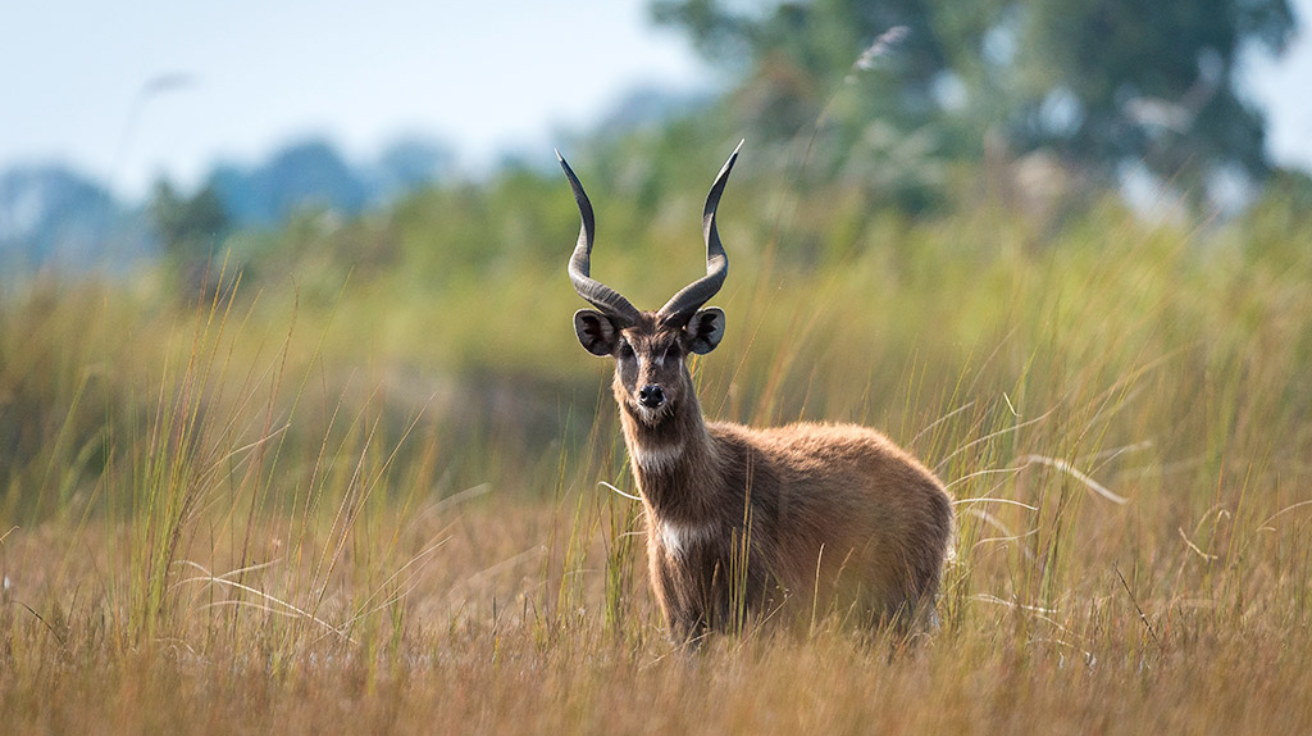
- Scientific Name:Tragelaphus spekii selousi
- Habitat & Range: Swamps, wetlands; Zambezi basin
- Unique Horn Structure & Function: Twisted horns; adaptation for swamp terrain
- Conservation Status: Near Threatened
37. Bohor Reedbuck
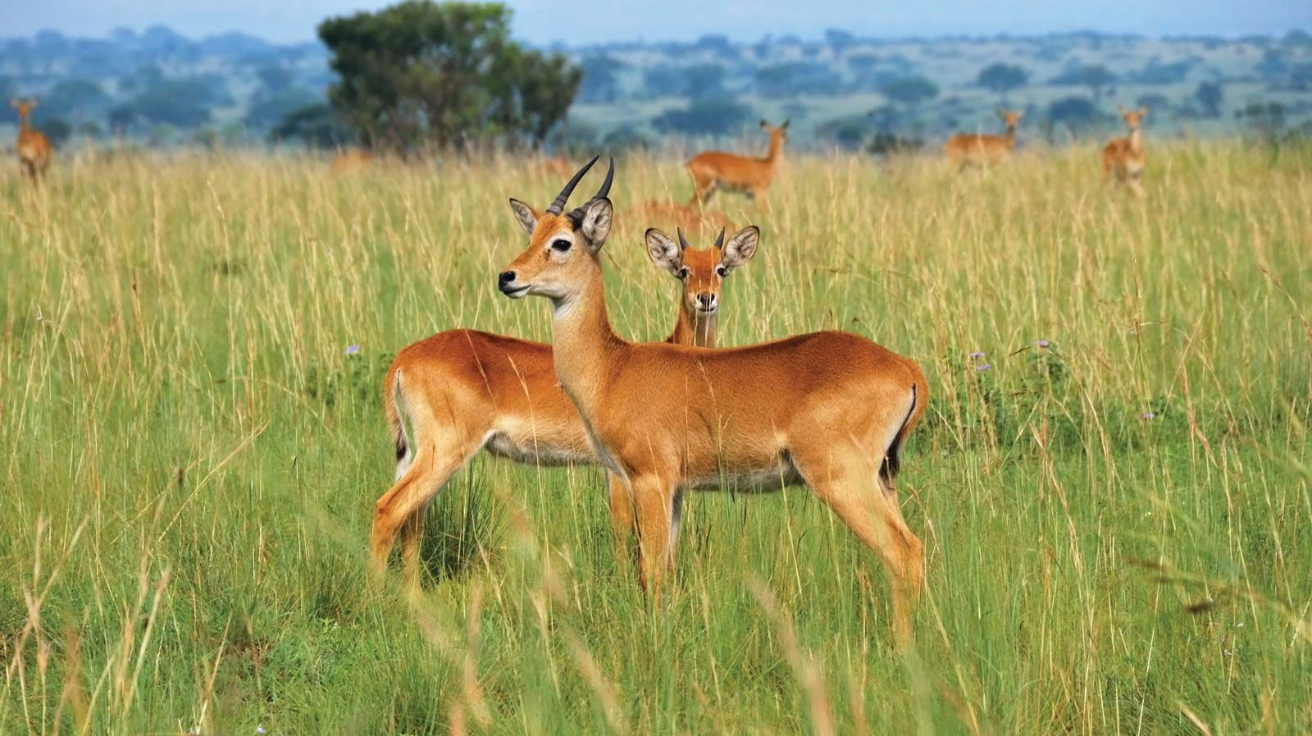
- Scientific Name:Redunca redunca
- Habitat & Range: Grasslands, wetlands; Central & West Africa
- Unique Horn Structure & Function: Short, ridged horns; used for defense and displays
- Conservation Status: Least Concern
The Meaning of Horns in African Culture
Horns hold deep cultural and spiritual significance in many African traditions. They are often seen as symbols of strength, power, and connection to the divine.
In many communities, the horn of an animal—especially from powerful creatures like bulls, rams, or antelopes—is believed to carry the spirit and energy of that animal.
This is why horns are used in rituals, ceremonies, and even as part of traditional regalia for kings, warriors, and spiritual leaders.
Beyond physical strength, horns also represent wisdom and protection.
Some African societies use them in spiritual practices, believing they can ward off evil spirits or bring good fortune. You’ll often find horns incorporated into masks, headdresses, or musical instruments, each carrying its own symbolic meaning.
For example, in some West African cultures, musicians play horn-shaped instruments during important celebrations to honor ancestors or summon spiritual guidance.
Even in modern times, the symbolism of horns remains relevant. They are still used in fashion, art, and traditional ceremonies, reminding people of their heritage and the powerful messages tied to them.
Even if as a sign of leadership, protection, or connection to nature, horns continue to be an important emblem in African cultural expression.
Surprising Facts About Africa’s Horned Wildlife
- Kudu’s Spirals Can Grow Over 6 Feet – A male kudu’s horns can reach up to 6 feet in length if unbroken, making them some of the longest twisted horns in the animal kingdom.
- Buffalo Herds Vote on Direction – African buffalo make group decisions by “voting,” where females stand and look in the direction they want to move before the herd follows the majority choice.
- Impala Can Leap Over 30 Feet – These agile antelopes can leap distances of up to 33 feet in a single bound to escape predators.
- Sable Antelopes Stand Their Ground – Instead of running, sable antelopes will face off against lions using their sharp, scimitar-shaped horns to defend themselves.
- Elands Are Surprisingly Fast – Despite being the largest antelope, elands can run at speeds of up to 40 mph, making them one of the fastest large land mammals.
- Bushbucks Freeze Instead of Fleeing – Unlike other antelopes that bolt from danger, bushbucks often freeze in place to blend into their surroundings, avoiding detection.
- Wildebeest Are Born Runners – A newborn wildebeest can stand and run within minutes of being born to keep up with the migrating herd.
- Springboks Perform “Pronking” Jumps – Springboks can jump straight up into the air up to 10 feet in a behavior called “pronking,” believed to confuse predators or signal fitness.
- Dik-Diks Mark Territory With “Tears” – These tiny antelopes produce a black secretion from glands near their eyes and rub it on surfaces to mark territory.
Final Thoughts
In this exploration of Africa’s horned creatures, we’ve seen the remarkable variety that exists across the continent.
From the massive horns of the buffalo to the Majestic spirals of the kudu, these structures serve multiple purposes beyond simple defense.
Each horn tells a story of adaptation and survival in challenging environments.
These anatomical features help animals find mates, establish dominance, and protect themselves from predators.
The horn designs we find in African species represent millions of years of natural selection at work. They’re perfect examples of how animals develop specialized traits to get on in specific habitats.
For readers interested in learning more about diverse animal adaptations, our blogs on Woodland Animals and Animals with Antlers provide additional insights into how different species have evolved interesting features for survival.
















